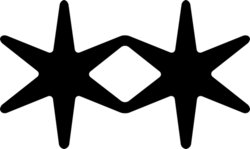Nature of Algorithmic
systems.
We live in the Age of Systems: complex algorithms, networks, data profiles, data corellations and interconnections absorb everything... Organic and artificial, natural and cultural, physical and digital. I capture their anatomy in the fossil and data to make a snapshot of this time to be preserved as 1000 year artefact.
Like casts of extinct species and evidence of geological catastrophes, like a broken file, a glitchy connection, an expiration or eco-utilization warranty card, these are messages about our time to the Future like fossils of ancient ages.
Anton Bundenko, 2021. The Nature of Algorithmic Systems.
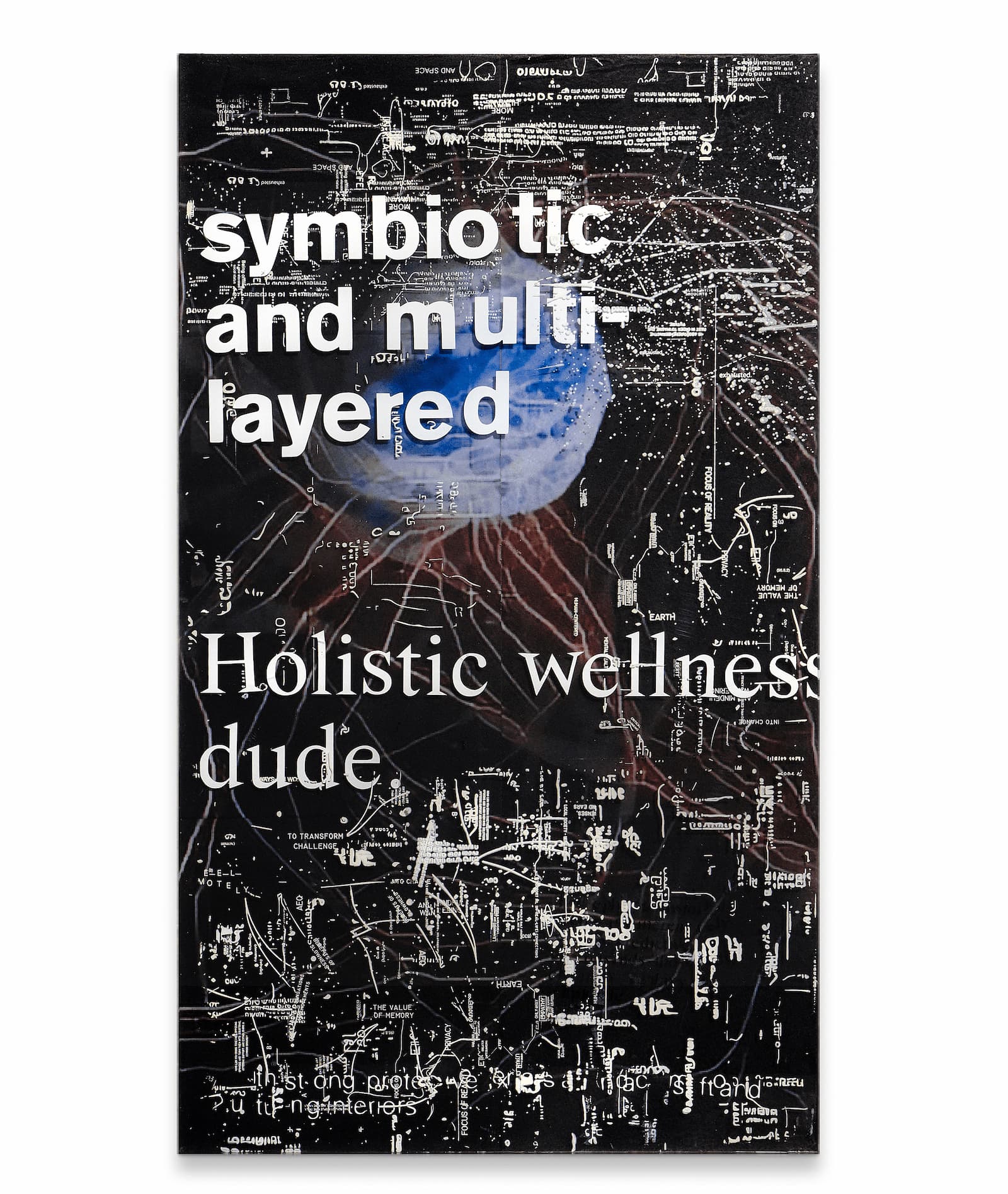
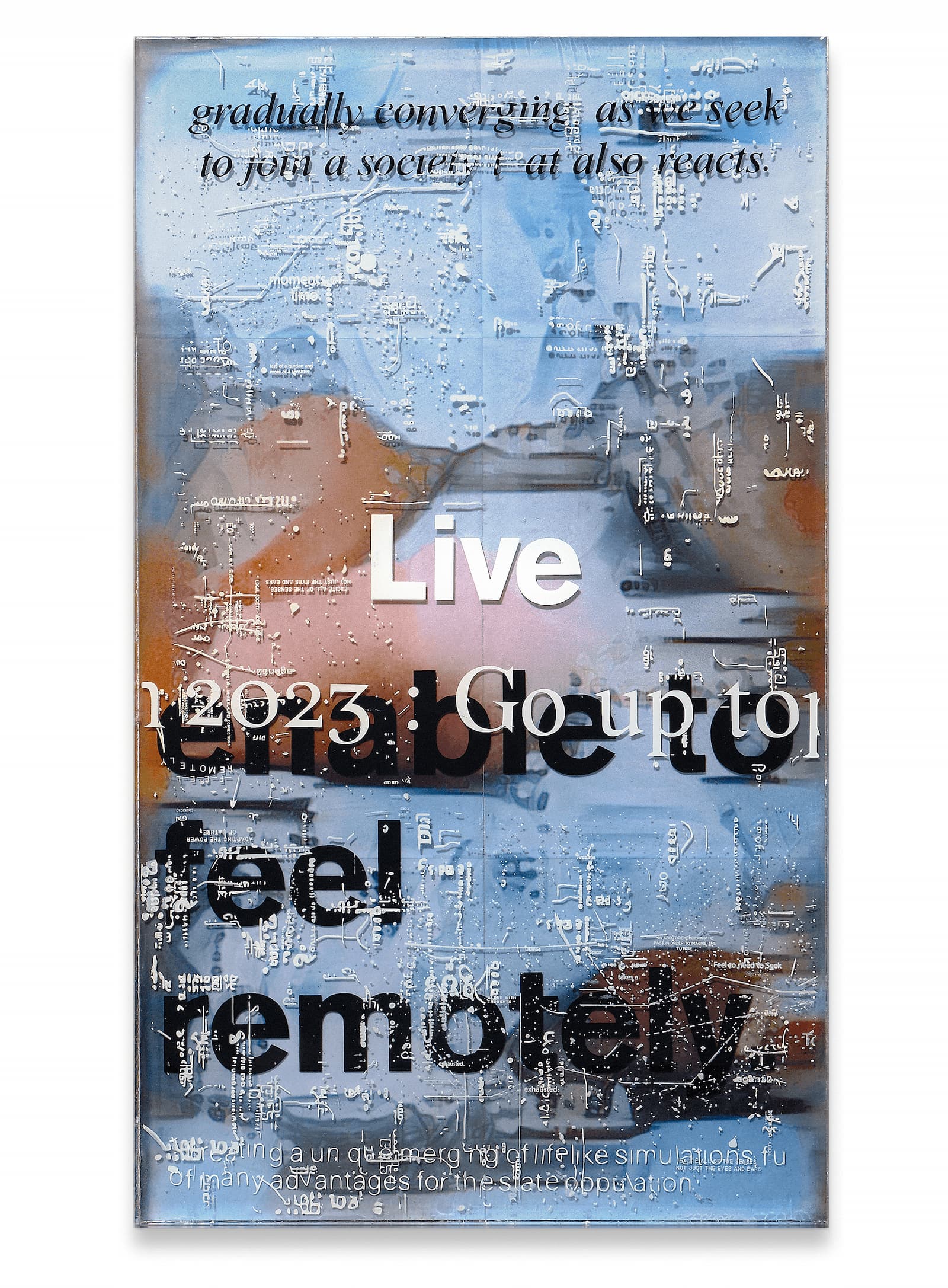

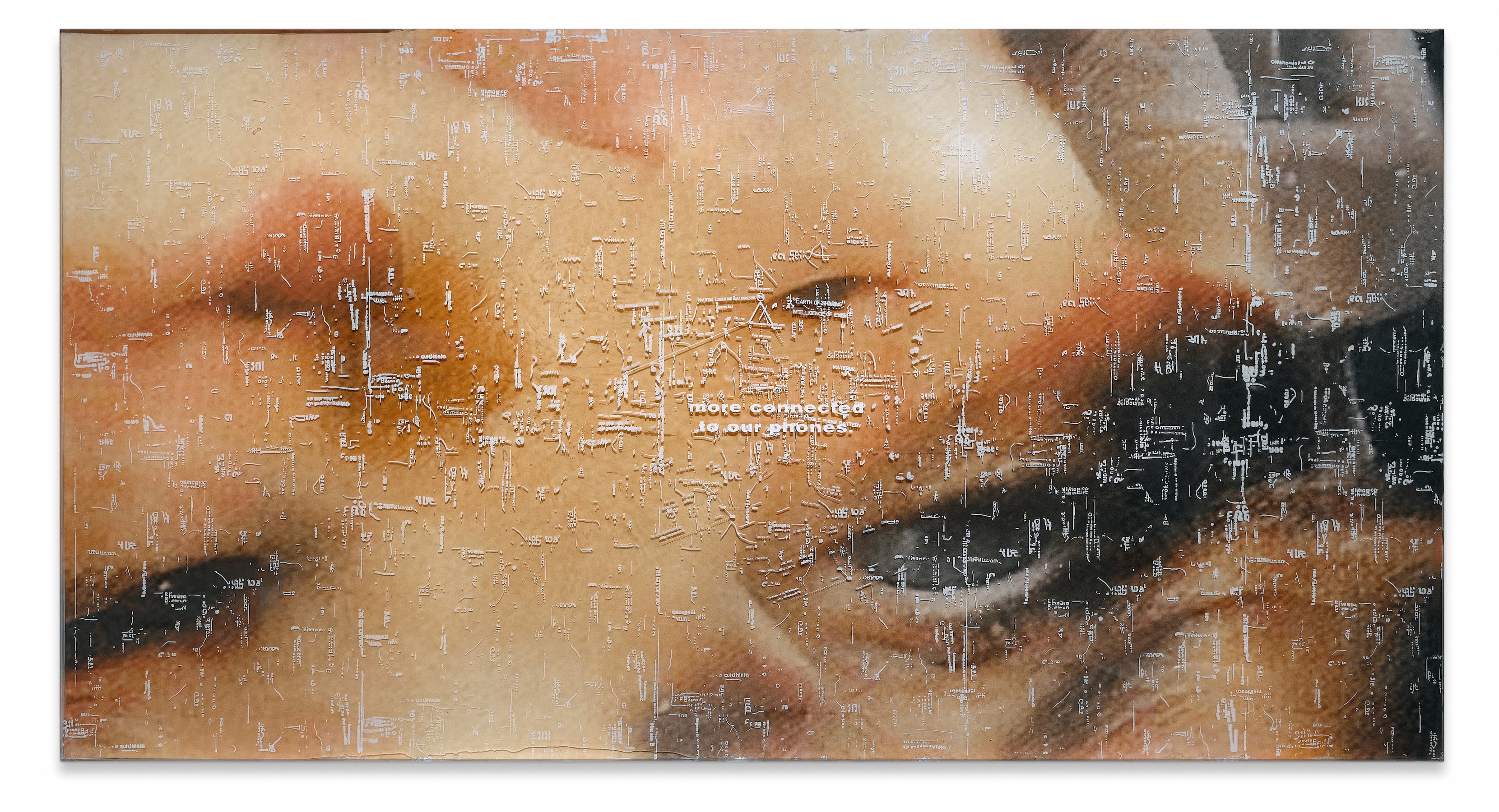

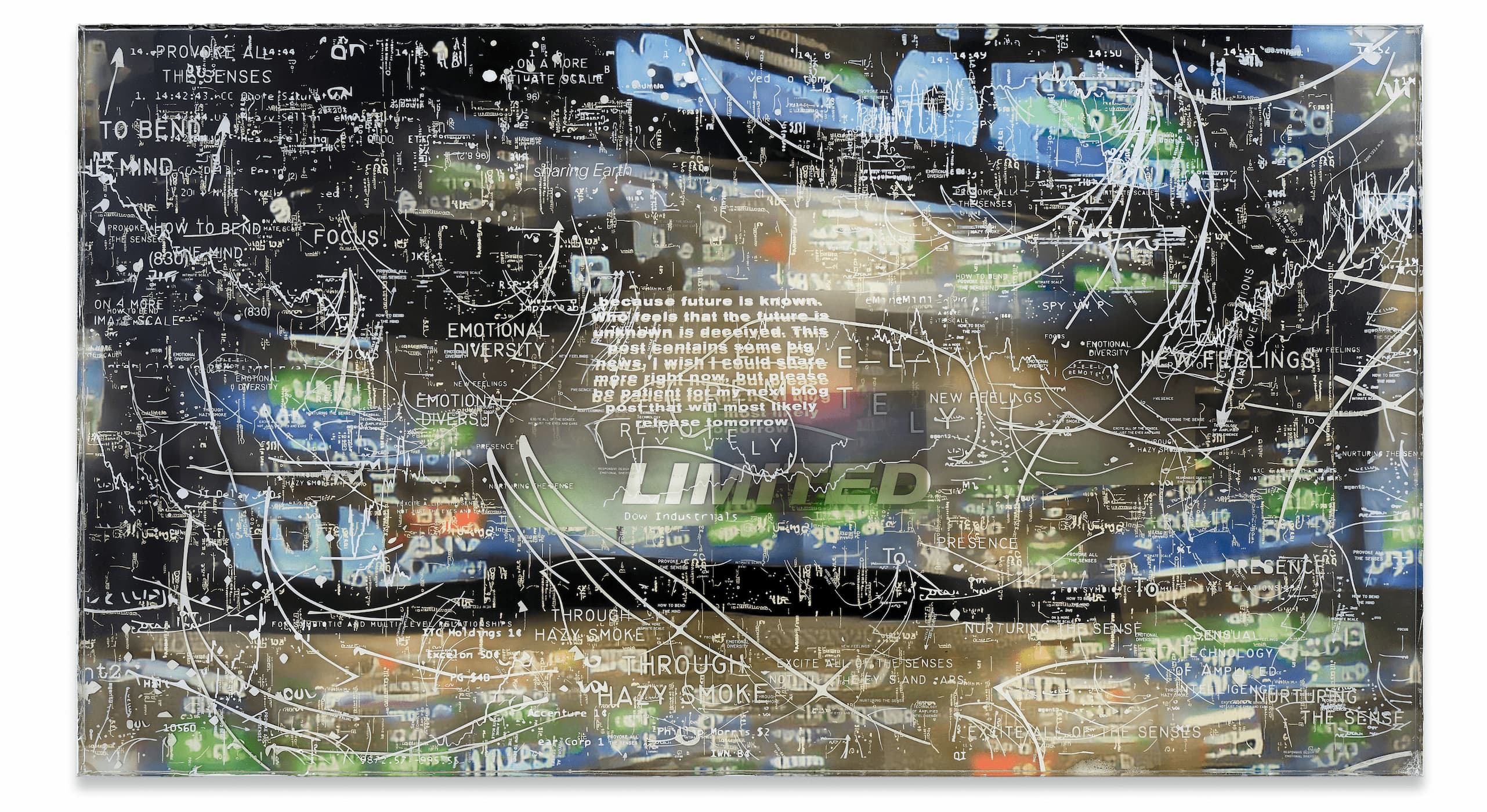

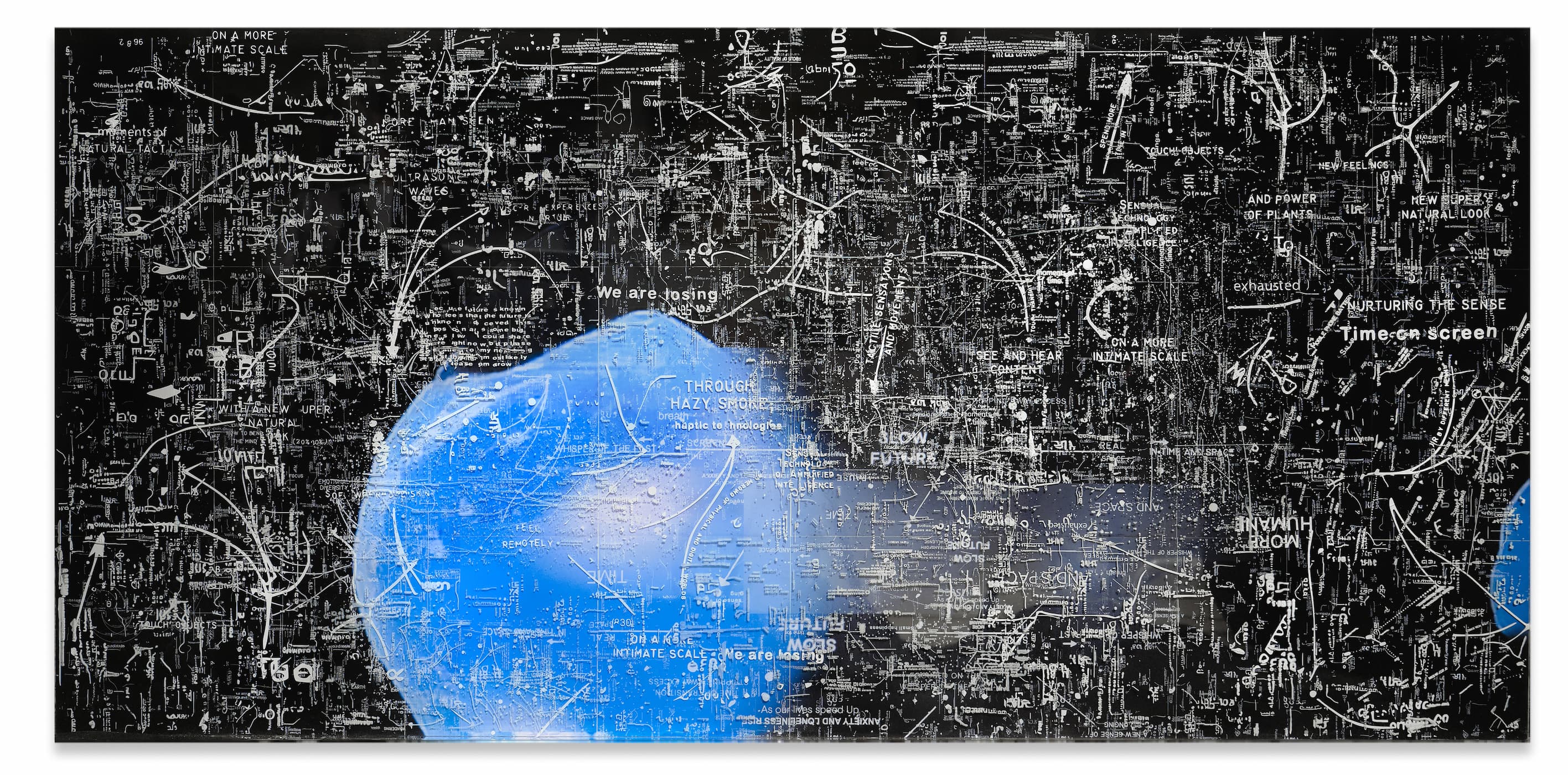


.
.
1. The Nature of Time.
A fluid mass of connections in which the constant data aggregation and operation of complex algorithms pervades all aspects of life.
Welcome to the age of systems where enormous amounts of data from Nature, the World and us in it are constantly being collected and processed, everyday generating endless content of posts, messages and digital traces into the structure of complex networks.
All of this is collected and crystallized through the prism of algorithm operation, defining the current actual basis for understanding the world and the information in it.
It is a fluid mass of connections that gathers reality into hyperscales, morphically and autopoetically forming systems of chains and boundaries, pairings and alienations, accumulations and captures, multiplicities and singularities, objects and their dissolutions into complex intersections of systems.
A fluid mass of connections in which the constant data aggregation and operation of complex algorithms pervades all aspects of life.
Welcome to the age of systems where enormous amounts of data from Nature, the World and us in it are constantly being collected and processed, everyday generating endless content of posts, messages and digital traces into the structure of complex networks.
All of this is collected and crystallized through the prism of algorithm operation, defining the current actual basis for understanding the world and the information in it.
It is a fluid mass of connections that gathers reality into hyperscales, morphically and autopoetically forming systems of chains and boundaries, pairings and alienations, accumulations and captures, multiplicities and singularities, objects and their dissolutions into complex intersections of systems.
Creating a reality in which the constant data aggregation and operation of complex algorithms permeates all aspects of life.
![]() Fragment of "fluid artwork and its changes under physical laws of gravity and pressure inside hardened resin. Fragment of the "fluid artwork" and its changes under the physical laws of gravity and pressure inside the hardened resin.
Fragment of "fluid artwork and its changes under physical laws of gravity and pressure inside hardened resin. Fragment of the "fluid artwork" and its changes under the physical laws of gravity and pressure inside the hardened resin.
2. The Language of Time
The language of algorithms performance.
There are two neural networks in operation, the first determines the style maps of the entity, the second begins to discover and determine the patterns from random noise or other image Each iteration of the algorithm is a correction, cutting the error, getting closer to the necessary style maps (understood by the first algorithm of the entity), until the error is reduced to a minor one.
 Fragment of "fluid artwork and its changes under physical laws of gravity and pressure inside hardened resin. Fragment of the "fluid artwork" and its changes under the physical laws of gravity and pressure inside the hardened resin.
Fragment of "fluid artwork and its changes under physical laws of gravity and pressure inside hardened resin. Fragment of the "fluid artwork" and its changes under the physical laws of gravity and pressure inside the hardened resin.2. The Language of Time
The language of algorithms performance.
There are two neural networks in operation, the first determines the style maps of the entity, the second begins to discover and determine the patterns from random noise or other image Each iteration of the algorithm is a correction, cutting the error, getting closer to the necessary style maps (understood by the first algorithm of the entity), until the error is reduced to a minor one.
This explains the nature of blurs and traces of data smudges. This is how the algorithm works.
![]()
This language is very important to me, because it is a language of the future, given in the present but not yet able to describe itself aesthetically, so that it can be characterized and determined.
It is the language of algorithms at their technical level of functioning. Their understanding of the world in the intersection of complex processes, representations of entities and data about them, style maps and their correlations.
The visual trace of such a language reshapes the rules of how objects and entities, the biological and the technological, the Natural and the New Natural, can be perceived.

This language is very important to me, because it is a language of the future, given in the present but not yet able to describe itself aesthetically, so that it can be characterized and determined.
It is the language of algorithms at their technical level of functioning. Their understanding of the world in the intersection of complex processes, representations of entities and data about them, style maps and their correlations.
The visual trace of such a language reshapes the rules of how objects and entities, the biological and the technological, the Natural and the New Natural, can be perceived.
3. Describing the Language of Time. (Layer 1)
The nose goes into the mess, the mess forms the ear, the ear goes into the symbols, where these symbols form "something".
As a viewer and person looking at the works, I manage to catch sight of patterns and signs that are still familiar to me, but after a while I lose the essence and understanding of wholeness. The nose turns into mess, the mess forms the ear, the ear goes into the symbols, where the symbols form something.
It turns out to be impossible to comprehend this whole, my orientation in the unknown fails.
The patterns and signs I know no longer come together when they are combined or processed into something else, into something different. The New-Natural: not yet existing, but already ubiquitous.
The nose goes into the mess, the mess forms the ear, the ear goes into the symbols, where these symbols form "something".
As a viewer and person looking at the works, I manage to catch sight of patterns and signs that are still familiar to me, but after a while I lose the essence and understanding of wholeness. The nose turns into mess, the mess forms the ear, the ear goes into the symbols, where the symbols form something.
It turns out to be impossible to comprehend this whole, my orientation in the unknown fails.
The patterns and signs I know no longer come together when they are combined or processed into something else, into something different. The New-Natural: not yet existing, but already ubiquitous.
.
.
Layer 1:
Neural Network Correlation.
“AI as the language.”
The image is created by AI GPT3 algorithvvveural networks and how they understand the human visual codes. Forms are fluidly changing between natural and superficial expressing the language of contemporary.
“The engine of contemporary history is no longer a human group, and that it partly sidesteps the order of the visible: what makes our history is the increasingly chaotic interactions between human activities and living matter.” (”Materialist Invisibility: Art As Organic Development In Pamela Rosenkranz’s” Flash-art - by Nicolas Bourriaud, 14 September 2021)
.
.

Social. More connected to our phones. Anton Bundenko, 2021. New Nature series.
Epoxy resin, data, air, aluminum composite, plastisol,
aqueous dyes, paper, neural algorithms, augmented reality digital layers, 82x145x1.5-2cm.
aqueous dyes, paper, neural algorithms, augmented reality digital layers, 82x145x1.5-2cm.
The nose goes into the mess, the mess forms the ear,the ear goes
into the symbols, where these symbols form "something".
“Produce forms that elude ontological classification because today we realize that the distinctions between natural and artificial, sentient and nonsentient, real and synthetic, life
and nonlife, do not exist or are starting to crumble.” (”Systemic Errors of Collective Intelligence. A Conversation with Agnieszka Kurant” Flash-art - by Noam Segal, 3 November 2021)
and nonlife, do not exist or are starting to crumble.” (”Systemic Errors of Collective Intelligence. A Conversation with Agnieszka Kurant” Flash-art - by Noam Segal, 3 November 2021)
.
.
Layer 2: Visual of Complex Data.
“Data as architecture.”
The data layers captures the infinity of interconnections and overlapped systems, created with data sets and profiles and social graphs in the Area of human and natural resources.
“In platform capitalism whatever remained of the commons has been ultimately privatized while the affective labor of crowds is constantly exploited... This is a new kind of extractivism developed in the digital economy of surveillance capitalism and based on value extraction from the collective intelligence of the entire society.” (”Systemic Errors of Collective Intelligence. A Conversation with Agnieszka Kurant” Flash-art - by Noam Segal, 3 November 2021)
.
.
4. Data and hyperlinks. The World of Systems.
A matrix of power: chains of interest mining, human labor and algorithmic processing bound through networks of mining, logistics, distribution, processing, forecasting and optimization.
In the same way, the real world reveals itself to be so connected and complex that it can no longer be understood and comprehended as a whole. It is impossible to fully grasp and explain the global warming, or the economy. The real world is composed of multiple systems, personal and positional worlds, and there is no knowledge capable of embracing it completely, of perceiving it objectively, and of realizing it. We only encounter a part of the world, a part of the processes, a part of the coordinates.
And what is important is that technology, represented by an object with a beautiful design and comfortable ergonomics, won't make us aware of vast networks of "here-and-now" and mutually moving back and forth by interactive possibilities of a particular device.
A matrix of power: chains of interest mining, human labor and algorithmic processing bound through networks of mining, logistics, distribution, processing, forecasting and optimization.
In the same way, the real world reveals itself to be so connected and complex that it can no longer be understood and comprehended as a whole. It is impossible to fully grasp and explain the global warming, or the economy. The real world is composed of multiple systems, personal and positional worlds, and there is no knowledge capable of embracing it completely, of perceiving it objectively, and of realizing it. We only encounter a part of the world, a part of the processes, a part of the coordinates.
And what is important is that technology, represented by an object with a beautiful design and comfortable ergonomics, won't make us aware of vast networks of "here-and-now" and mutually moving back and forth by interactive possibilities of a particular device.
Behind the usual voice assistant request rests a vast matrix of power: chains of interest mining, human labor, and algorithmic processing intertwined through networks of mining, logistics, distribution, processing, forecasting, and optimization.
I also become involved in this vast network of feedback, sensors, and storage, and agent-based modeling allows us to understand how organized behavior emerges from the chaos of individuals' actions and connections combined. Predictive algorithms use actions to make extremely accurate forecasts of future behavior.
That system's scale goes beyond human imagination. It is seamless, imperceptible, and it is always hidden from perception.
5. Context maps. Data (Layer 2)
Research and entanglements, forums, reports, statistics, structural chains, connections, and maps. Navigation Maps.
To fully understand the actual world and modern processes it is necessary to have an ever-changing ontology of complex feedback chains, sudden results,
I also become involved in this vast network of feedback, sensors, and storage, and agent-based modeling allows us to understand how organized behavior emerges from the chaos of individuals' actions and connections combined. Predictive algorithms use actions to make extremely accurate forecasts of future behavior.
That system's scale goes beyond human imagination. It is seamless, imperceptible, and it is always hidden from perception.
5. Context maps. Data (Layer 2)
Research and entanglements, forums, reports, statistics, structural chains, connections, and maps. Navigation Maps.
To fully understand the actual world and modern processes it is necessary to have an ever-changing ontology of complex feedback chains, sudden results,
circumstance-dependent consequences and their immediate correlations.
In this regard - technical tools such as complex algorithms become the main means of understanding from the processing possibility side. Simulation models that work with metadata to extract many explicit and micro-relationships to store, process and graph it.
This is how context maps are formed through the study of relevant forums, reports, and statistics. All studies are collected into structural but complex chains. Based on the chains, charts are created as cognitive navigation maps, where all graphics, textures, and every element, even random ones, appear non-random.
All of them represent complex explorations and entanglements, systems and reflections, inclusions and tricks, understandings and its difficulties, reflecting the nature of our time.
6. Maps after Context. (Layer 3) AR
Overlaying context is rather disorienting, but immerses you in a sense of a more authentic reality, more valid.
In this regard - technical tools such as complex algorithms become the main means of understanding from the processing possibility side. Simulation models that work with metadata to extract many explicit and micro-relationships to store, process and graph it.
This is how context maps are formed through the study of relevant forums, reports, and statistics. All studies are collected into structural but complex chains. Based on the chains, charts are created as cognitive navigation maps, where all graphics, textures, and every element, even random ones, appear non-random.
All of them represent complex explorations and entanglements, systems and reflections, inclusions and tricks, understandings and its difficulties, reflecting the nature of our time.
6. Maps after Context. (Layer 3) AR
Overlaying context is rather disorienting, but immerses you in a sense of a more authentic reality, more valid.
With the layering of data, systems, relationships, and navigational maps, it becomes impossible to grasp their whole essence. Overlapping context reveals new readings, connections and interpretations. Schemes of directions, infrastructure, architectonics, and stacks are mixed and layered. They become incomprehensible. Each of the elements, though important, complete, autonomous, but connected and multilaterally dependent. Equal to everyone else in the chain, but, at the same time, unique and detachable.
Text and readings are not linear. The connections extend through time and space. Different layers not previously or separately perceived reveal a new significance and power, coming together in the context of all the networks and connections.
Here it is no longer possible to recognize the beginning and the end, or whether there is one. It rather disorients the trajectory of exploration and understanding, but immerses us in a sense of a more authentic reality, more actual and valid.
Text and readings are not linear. The connections extend through time and space. Different layers not previously or separately perceived reveal a new significance and power, coming together in the context of all the networks and connections.
Here it is no longer possible to recognize the beginning and the end, or whether there is one. It rather disorients the trajectory of exploration and understanding, but immerses us in a sense of a more authentic reality, more actual and valid.
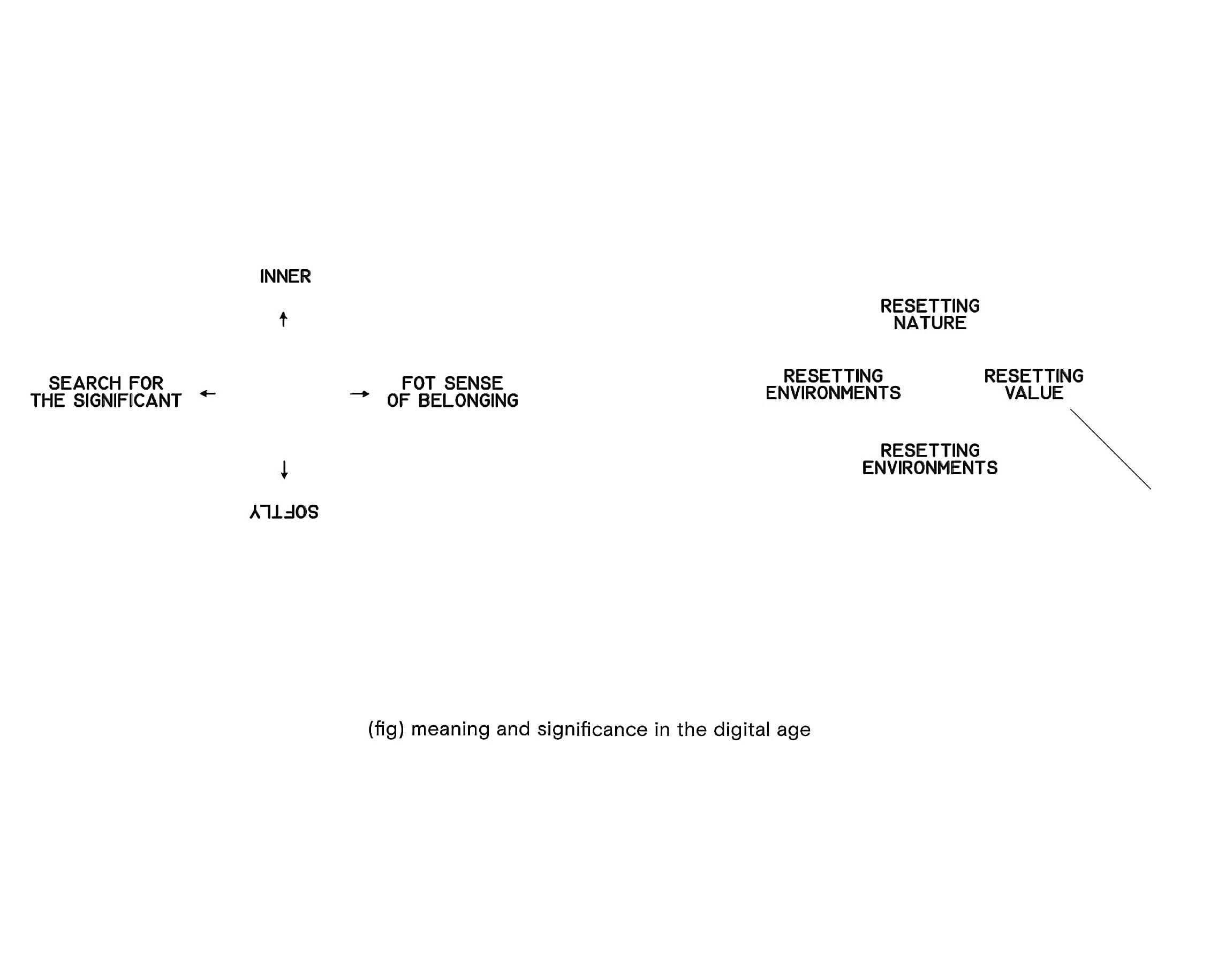
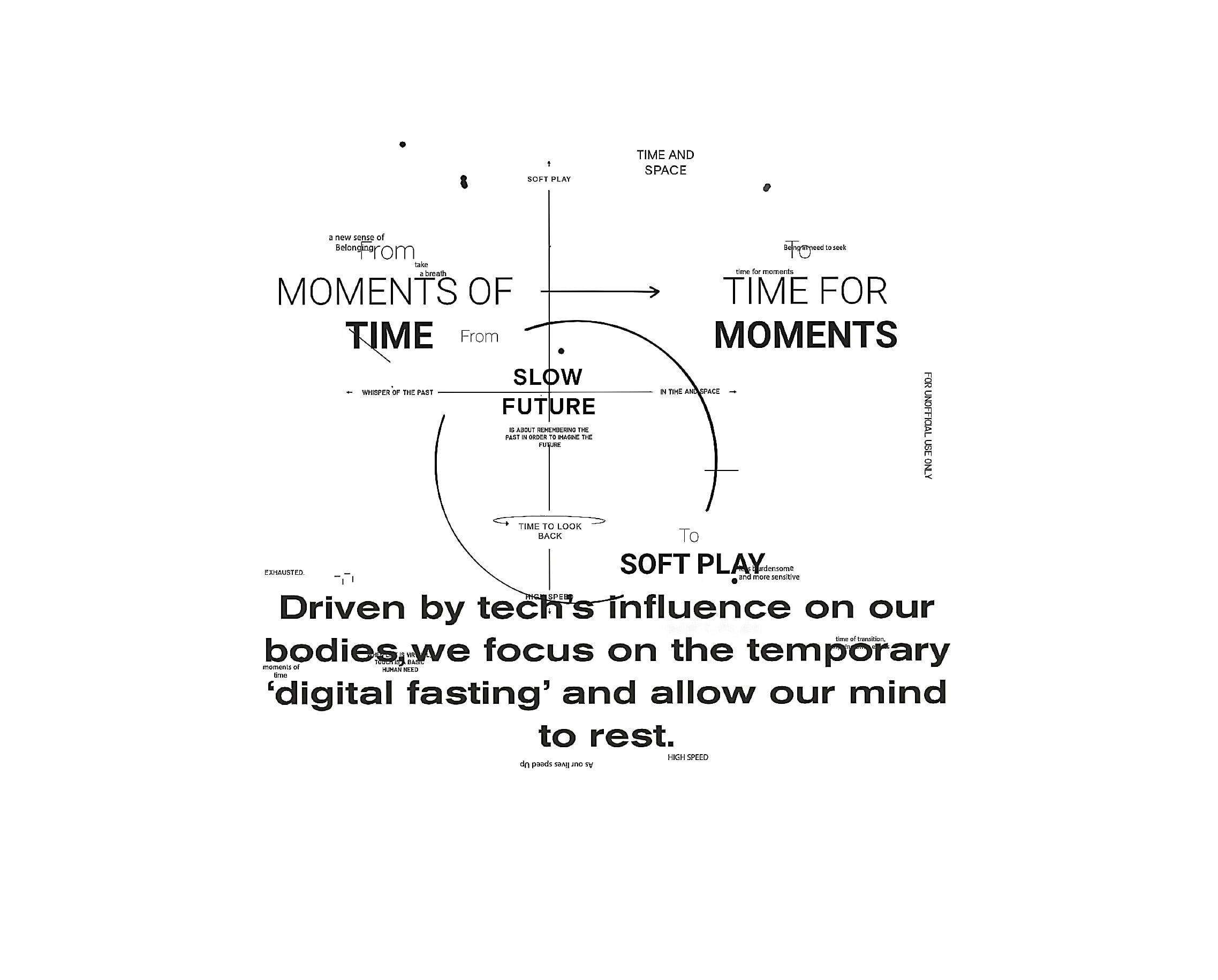
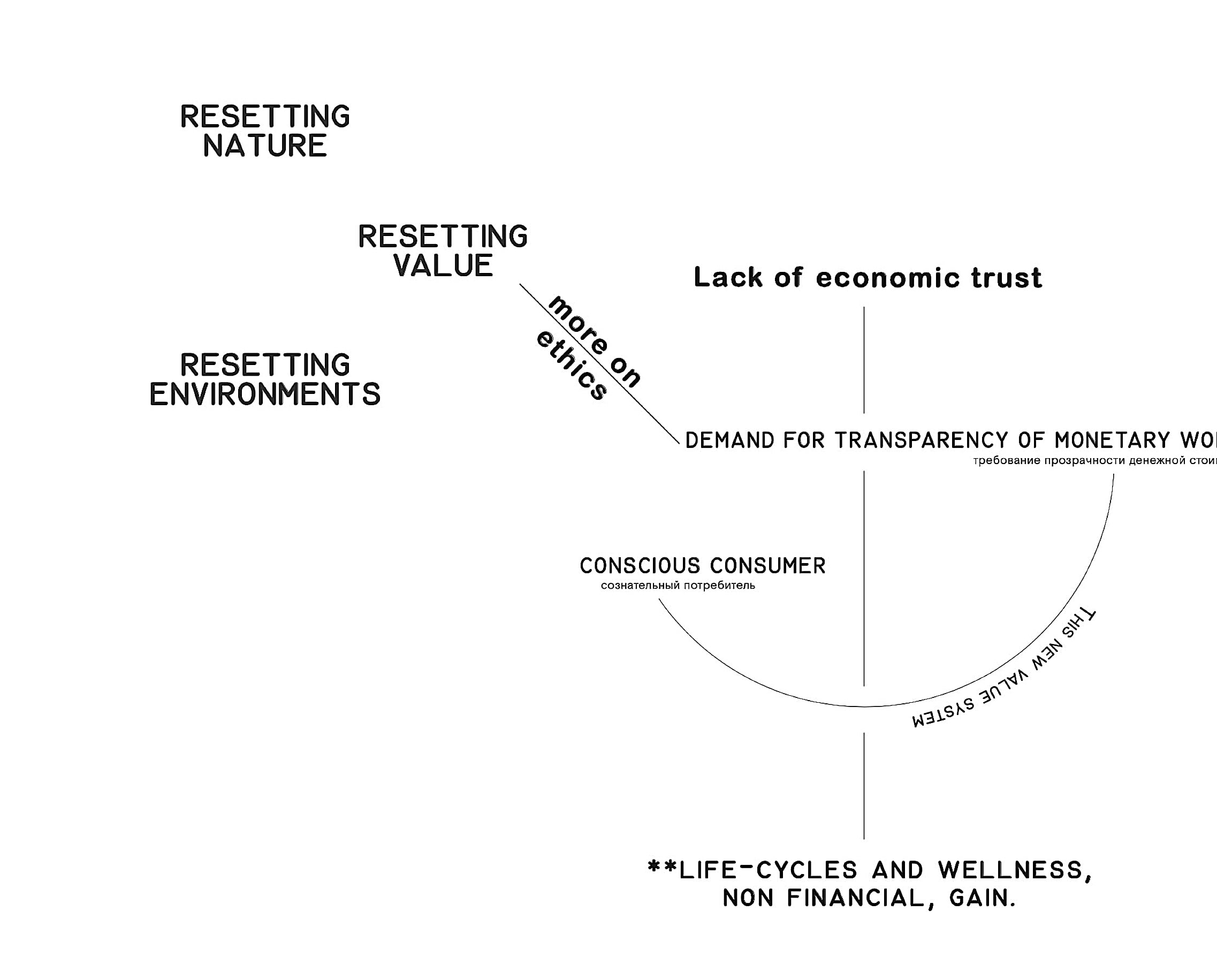
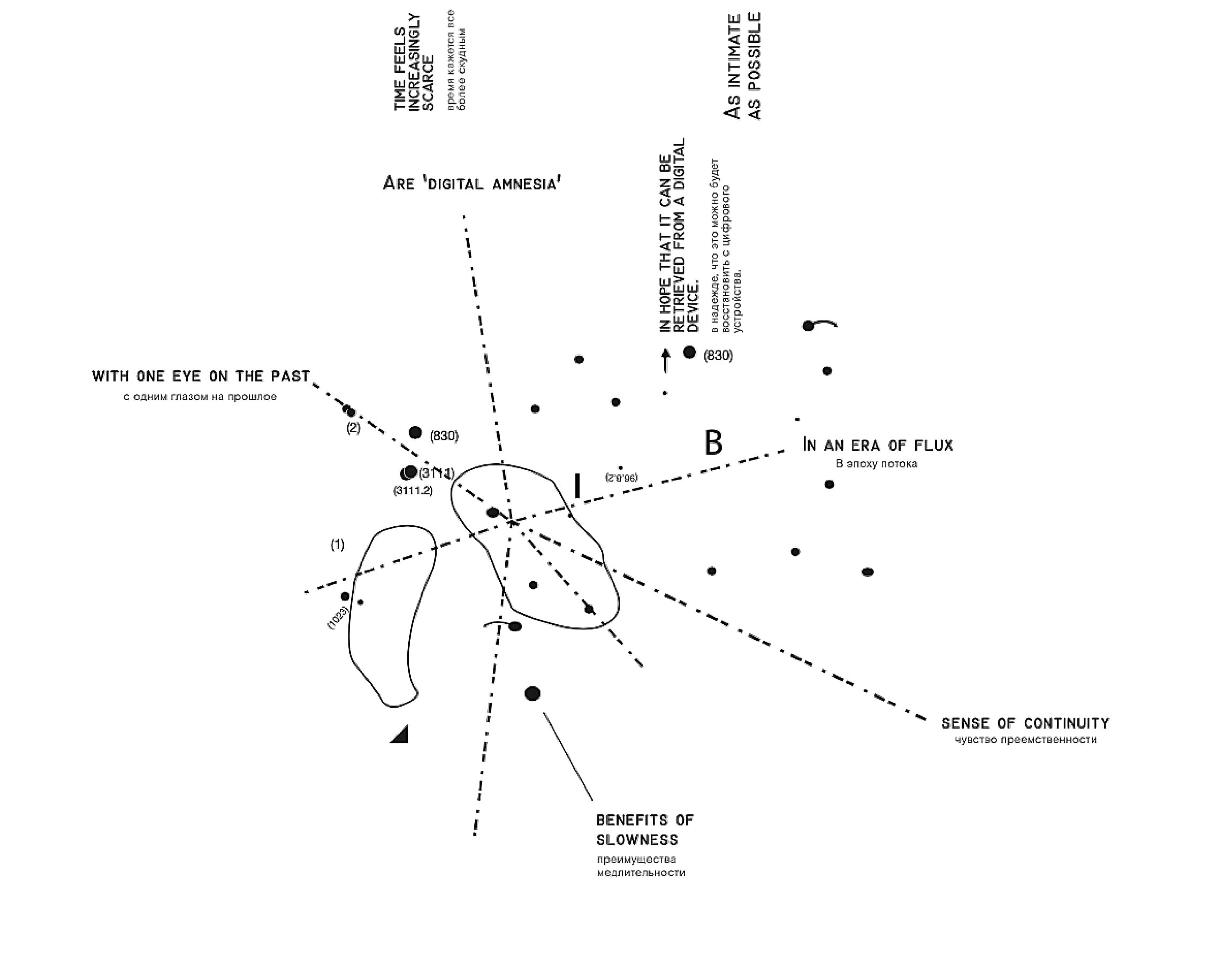
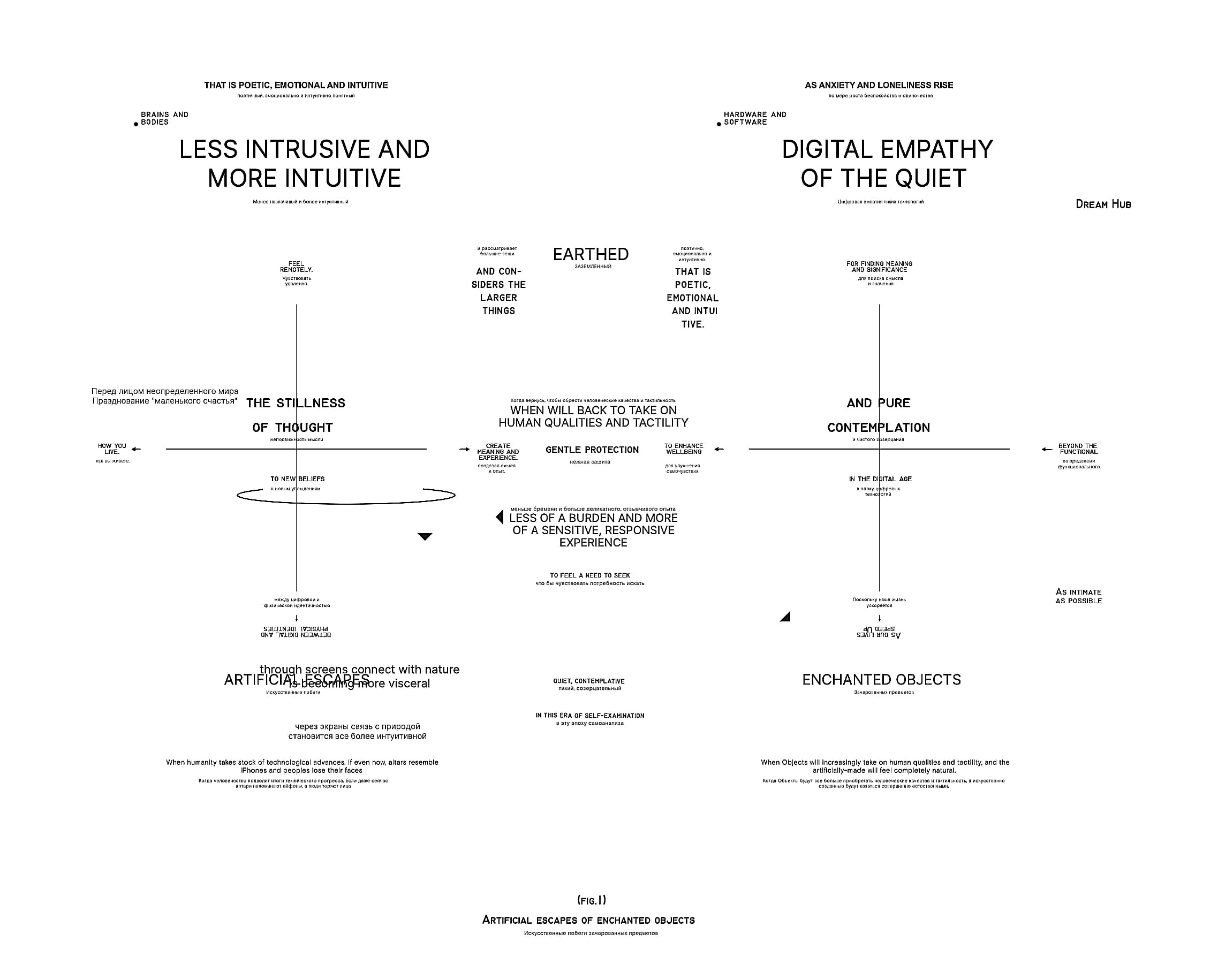
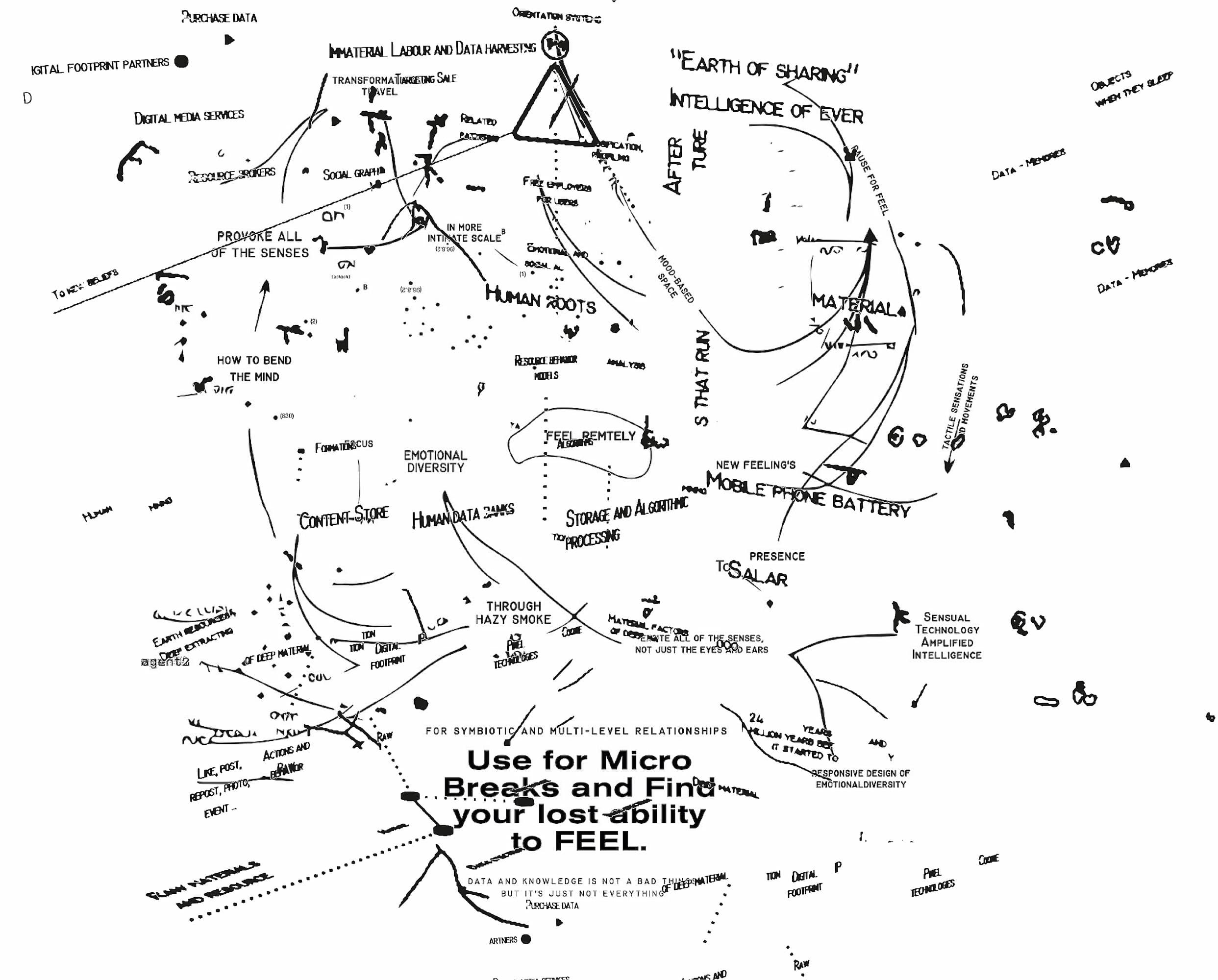
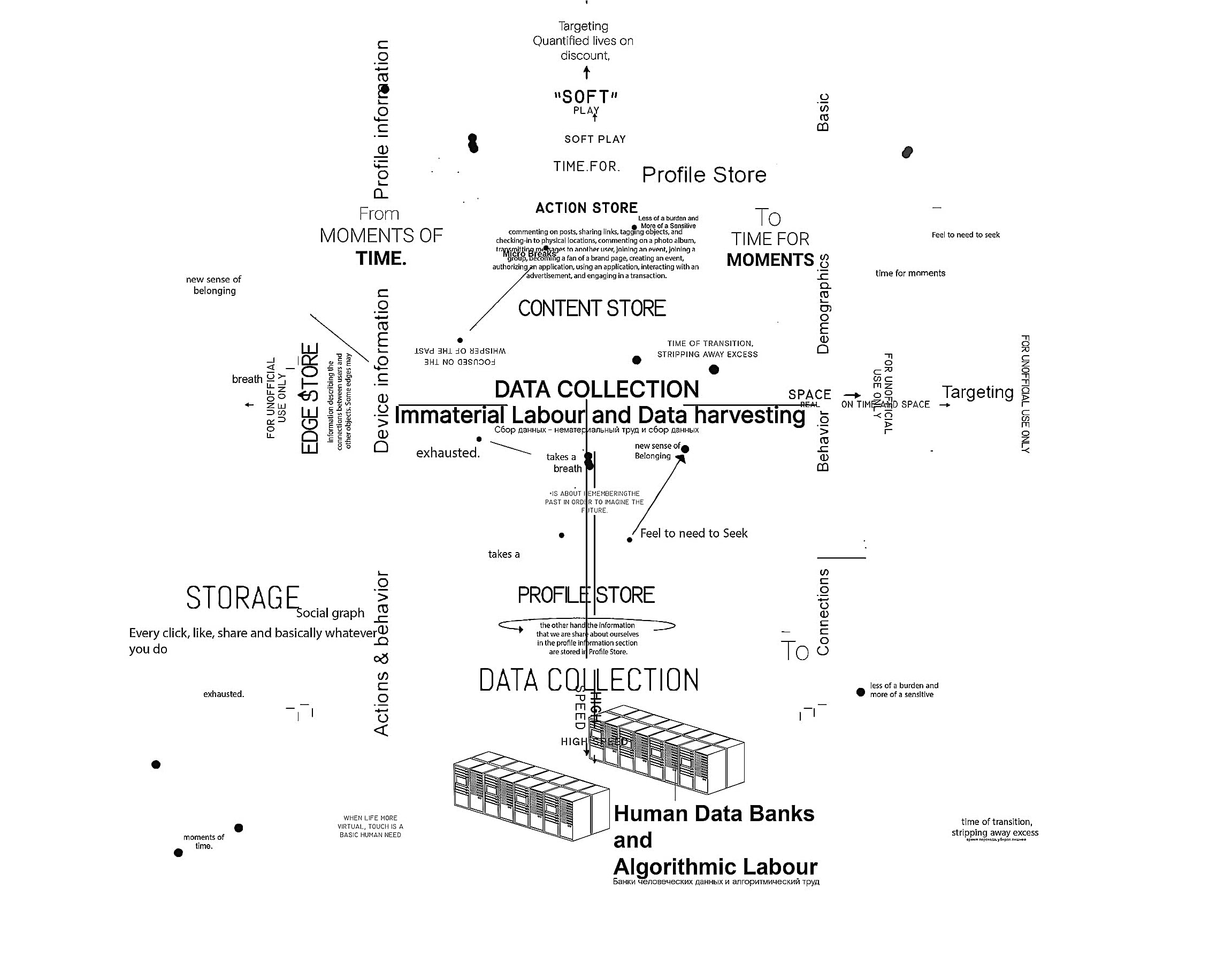
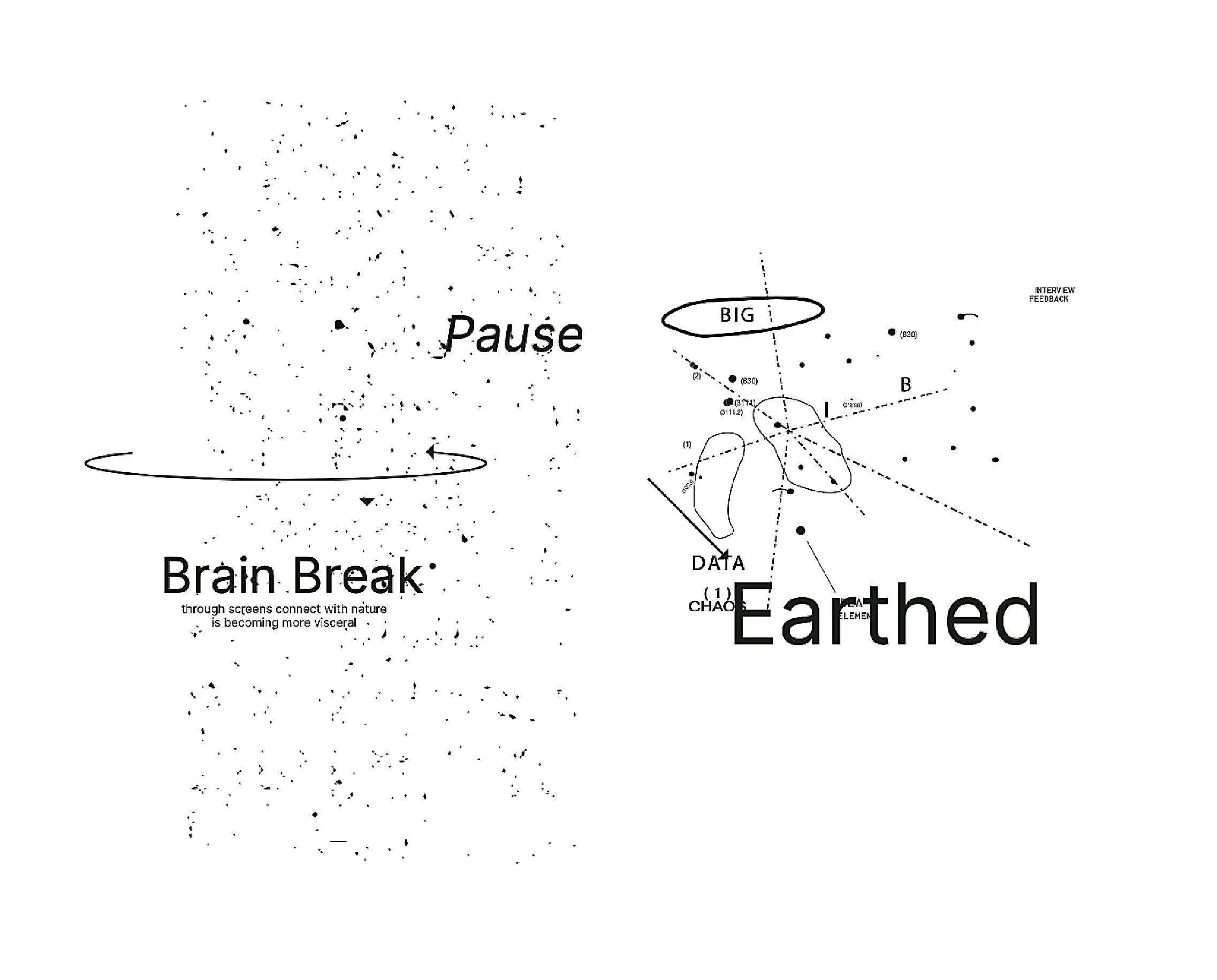
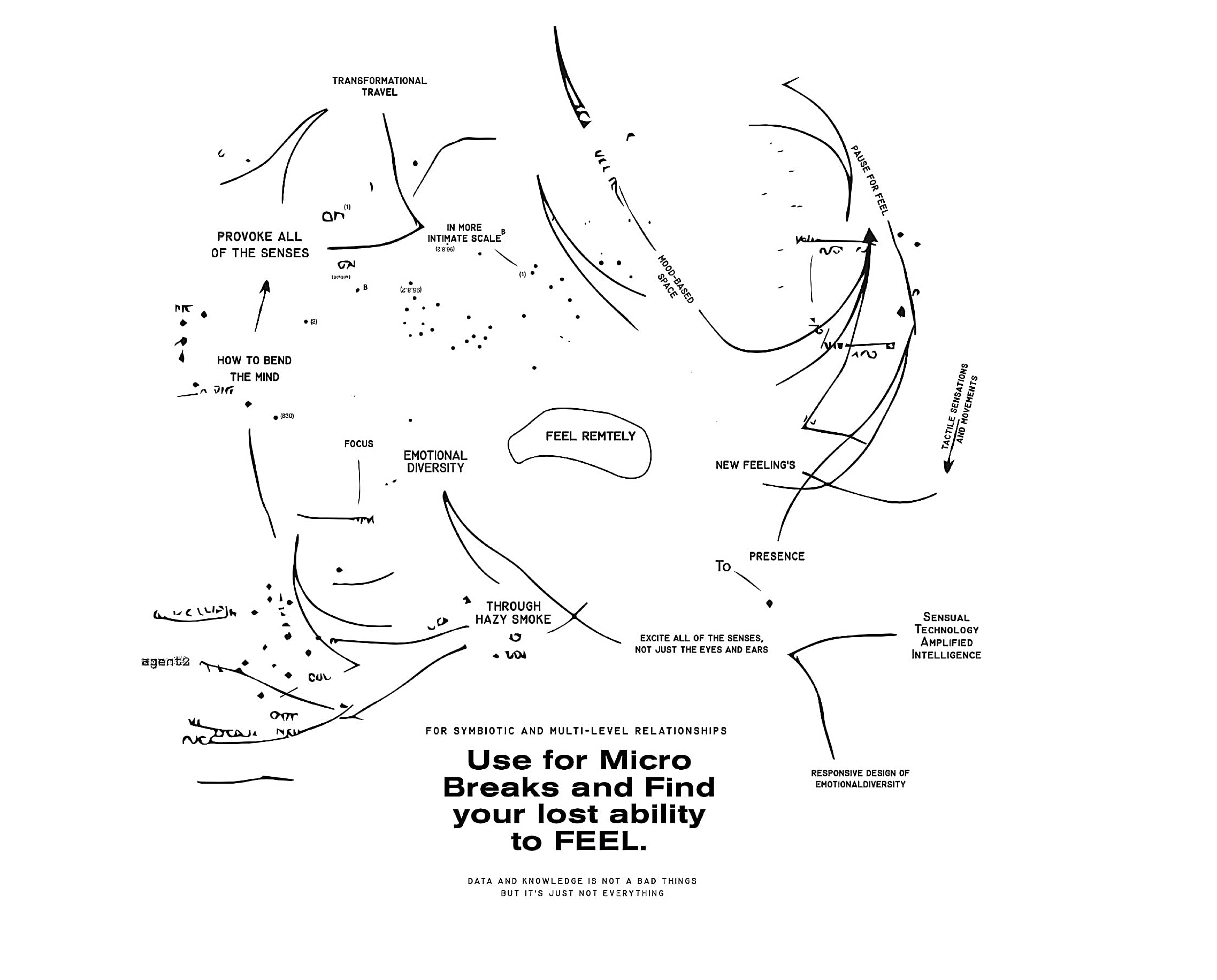
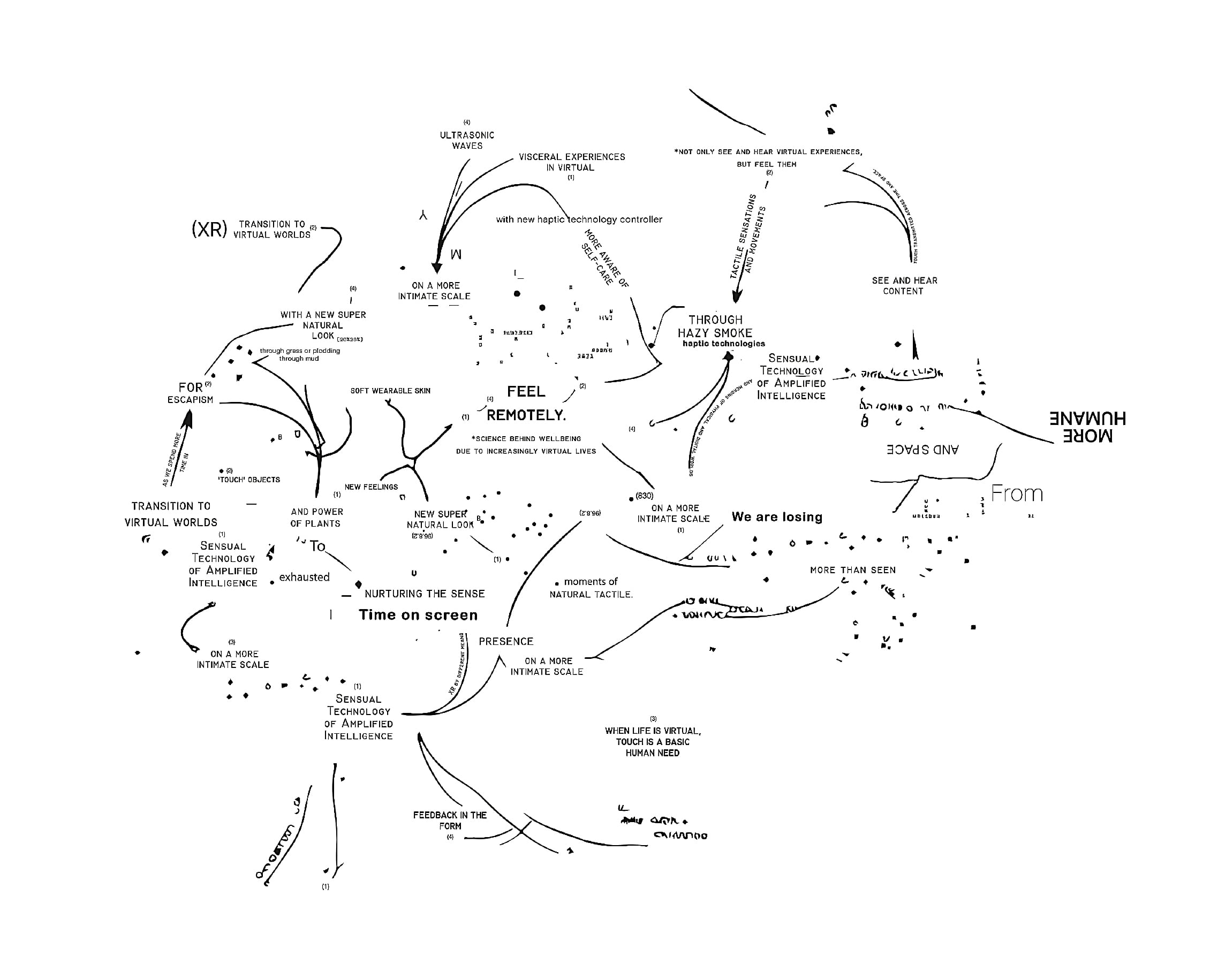
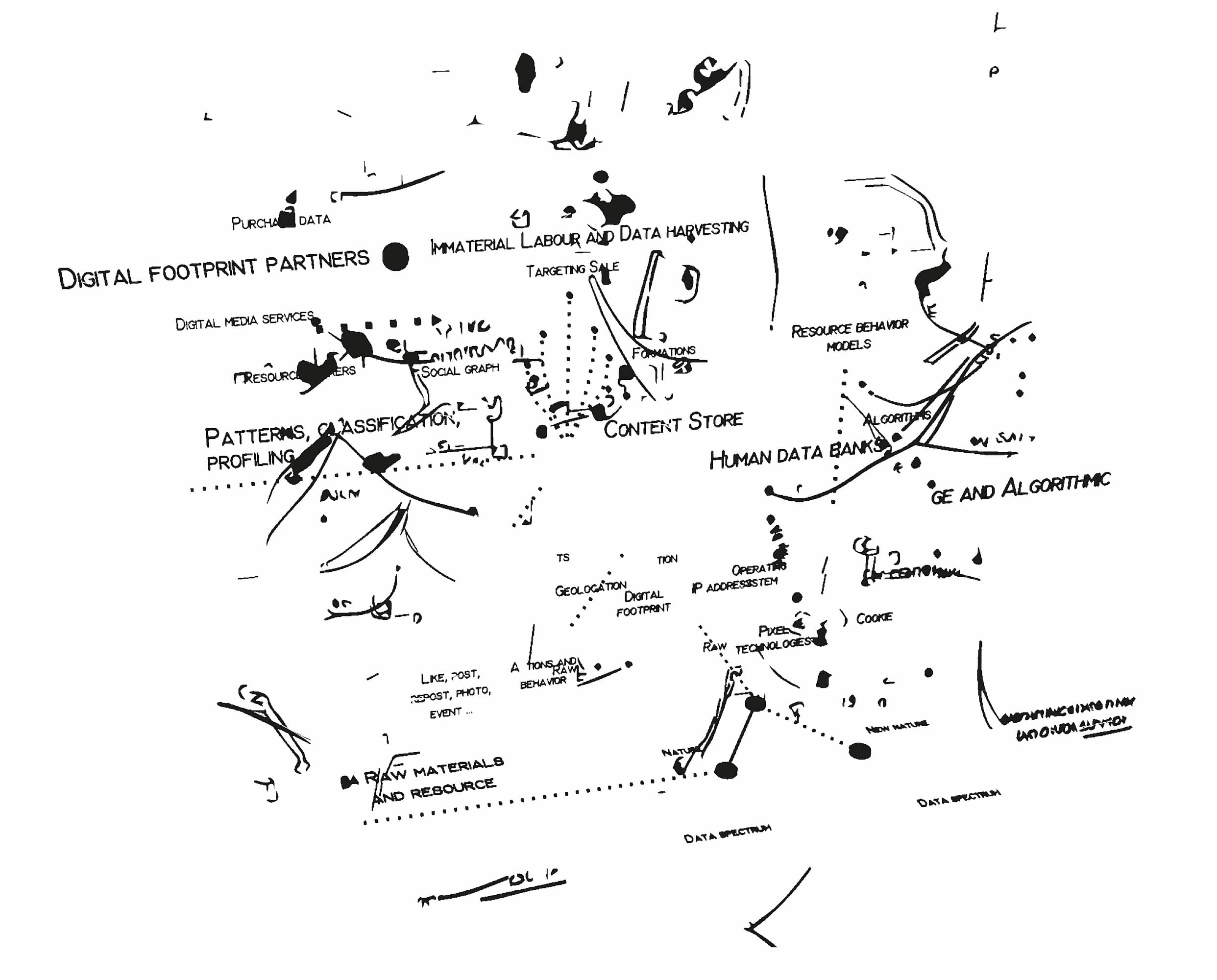



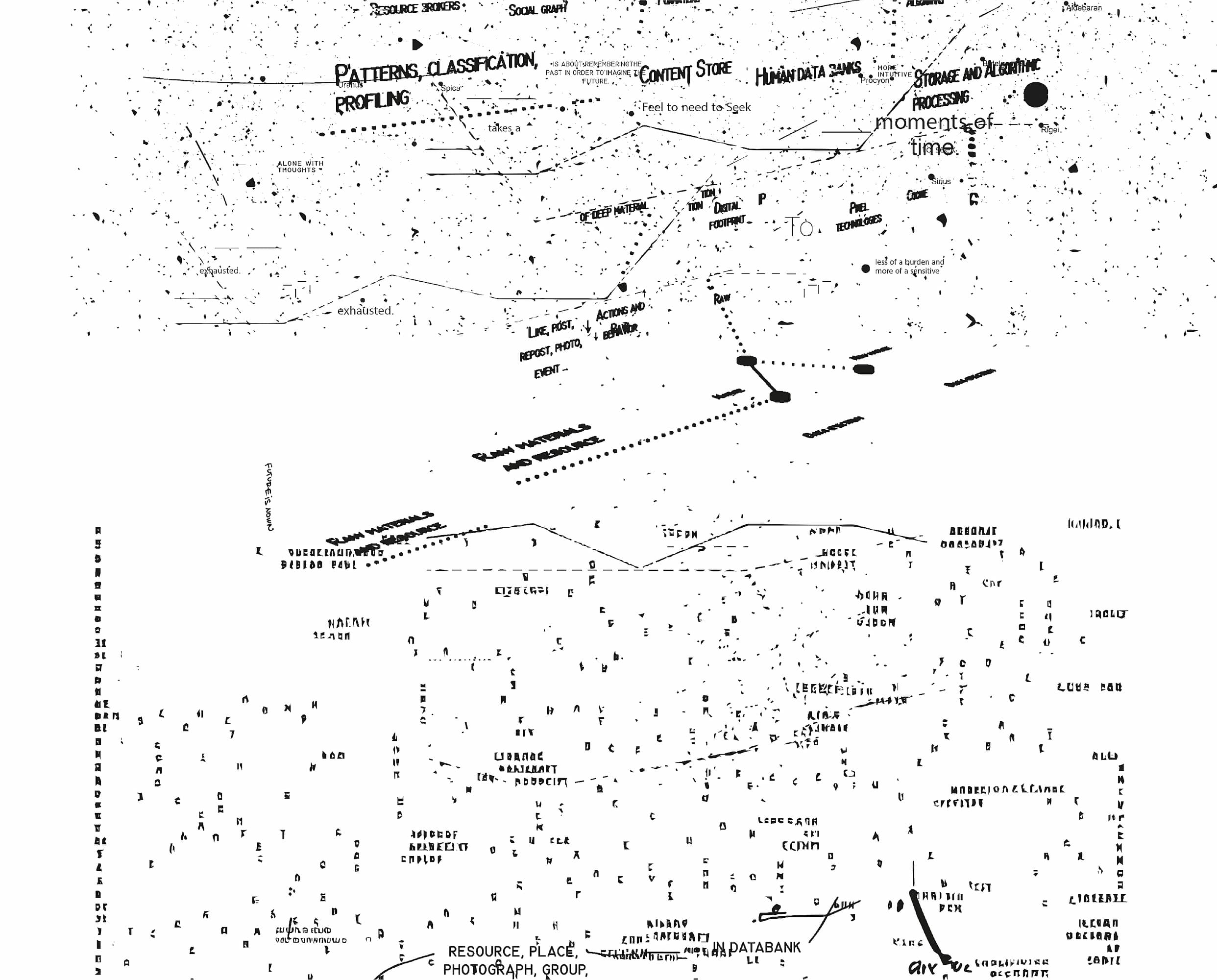

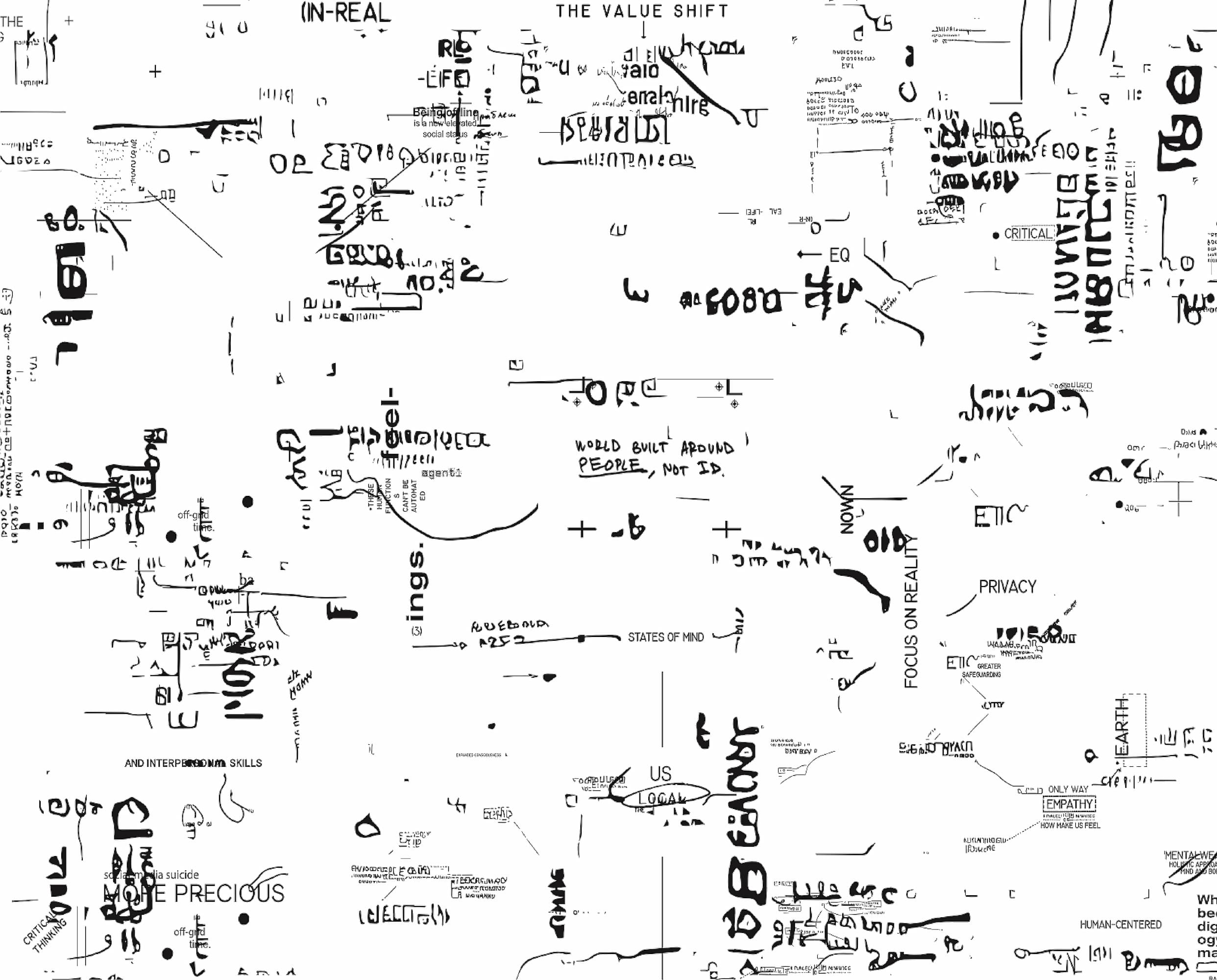
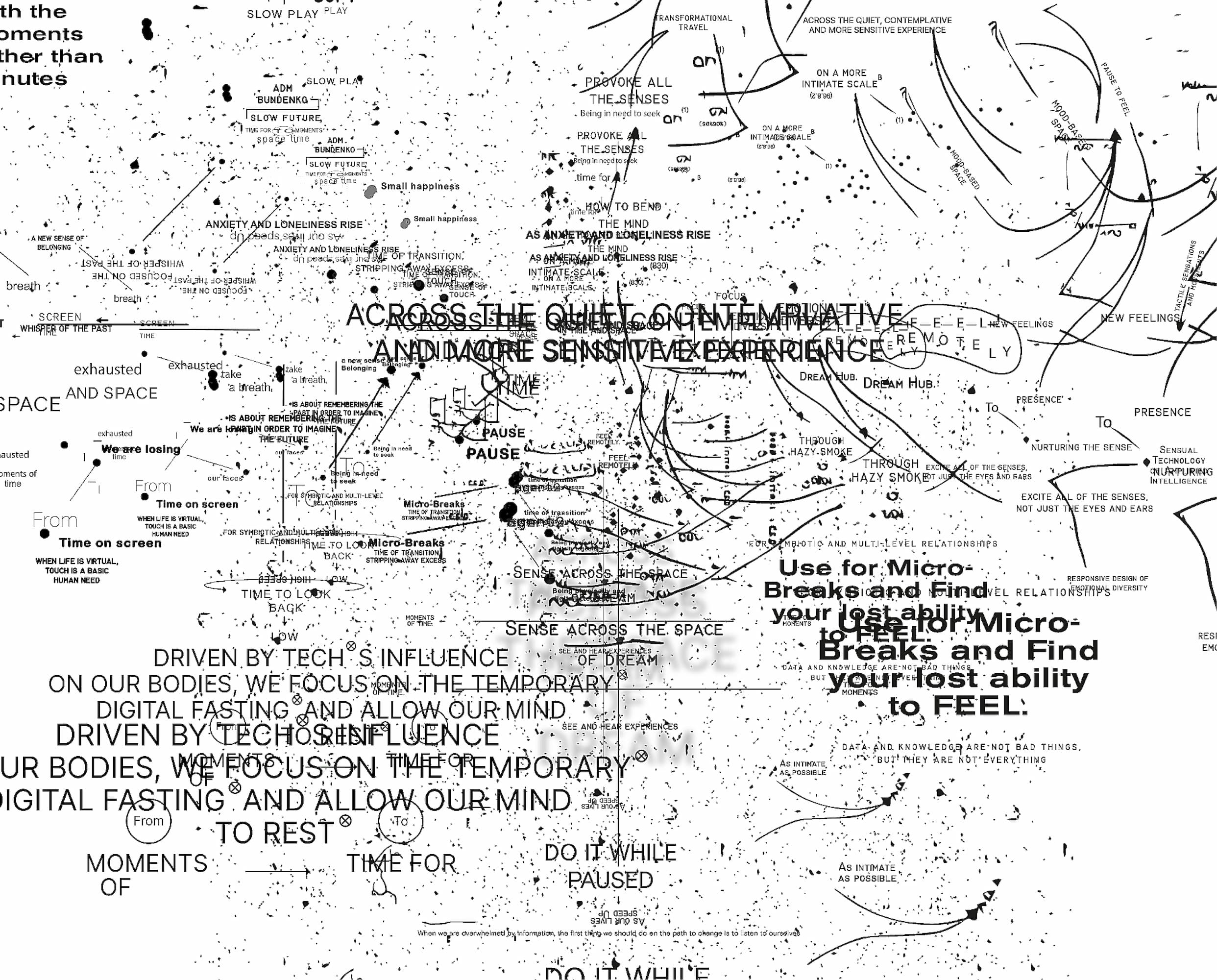
Navigation maps and schemes. Anton Bundenko, 2020-2021. Data, digital (schemes, material for artworks). Layering of the navigation maps and schemes, Neural network algorithms. Anton Bundenko, 2021. Data, neural algorithms, digital (schemes, material for artworks).

.
.
.
Digital sk. Anton Bundenko, 2021. New Nature series. Data, neural algorithms, digital (sketch, material for artwork).
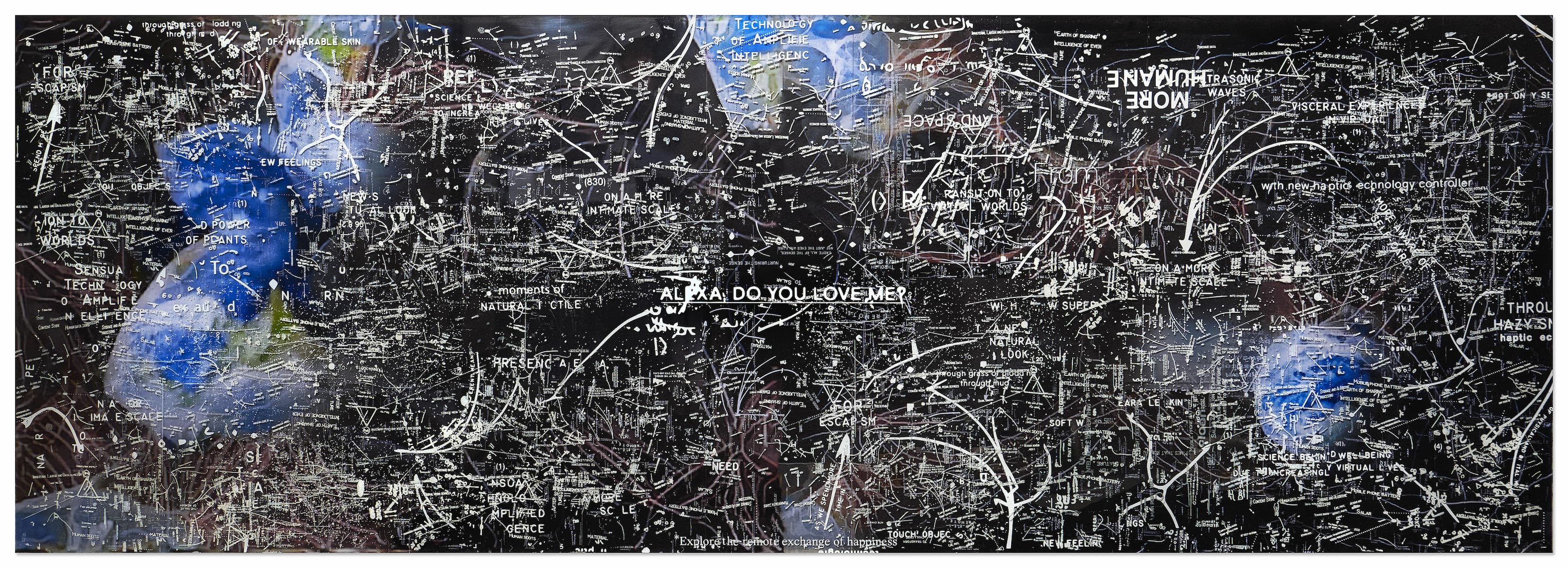
.
.
.
Remote exchange of happiness. Anton Bundenko, 2021. Epoxy resin, data, air, aluminum composite, plastisol
aqueous dyes, paper, neural algorithms, augmented reality digital layers, 70x200x1.2-2cm. BW scan.
.
.
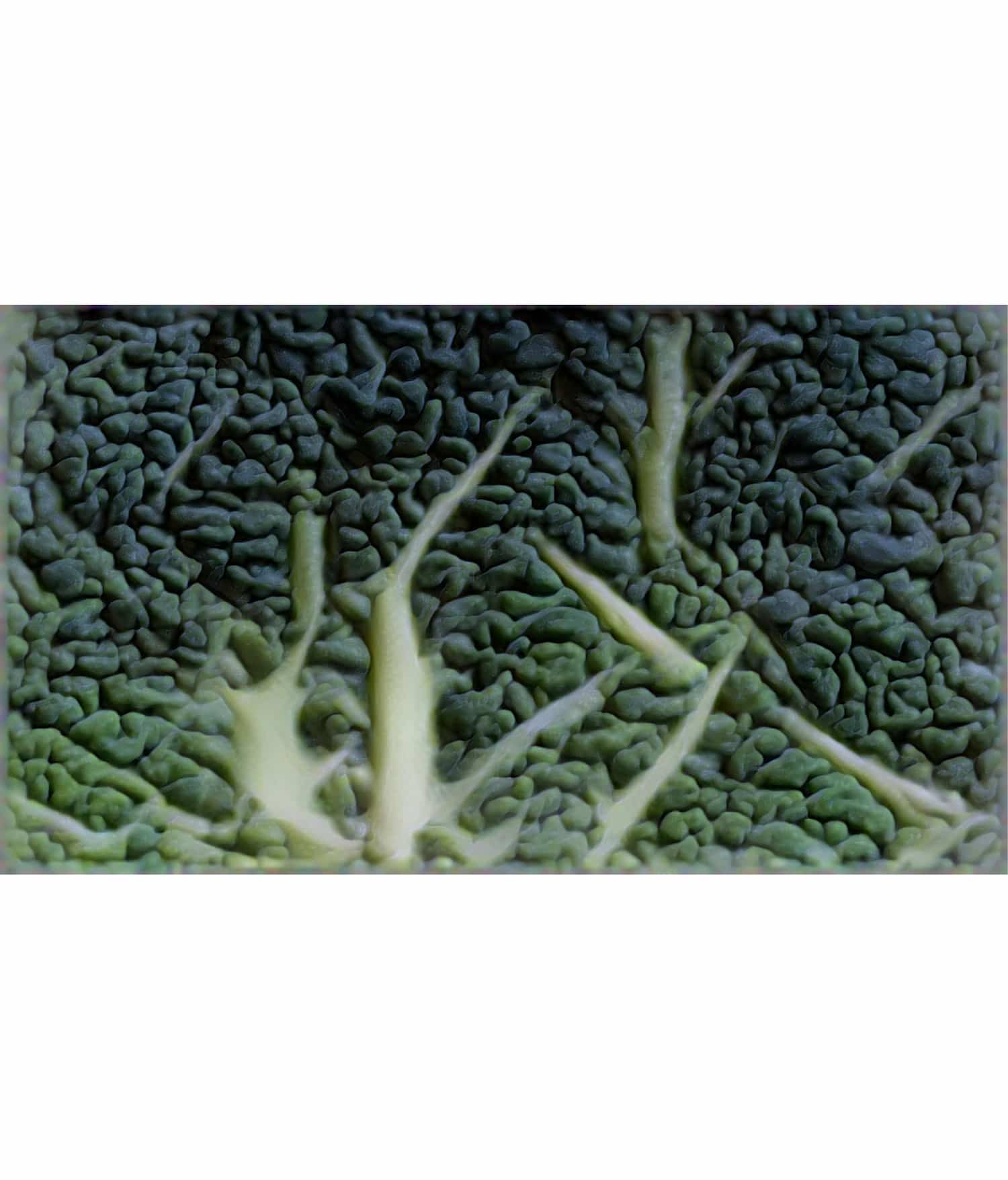
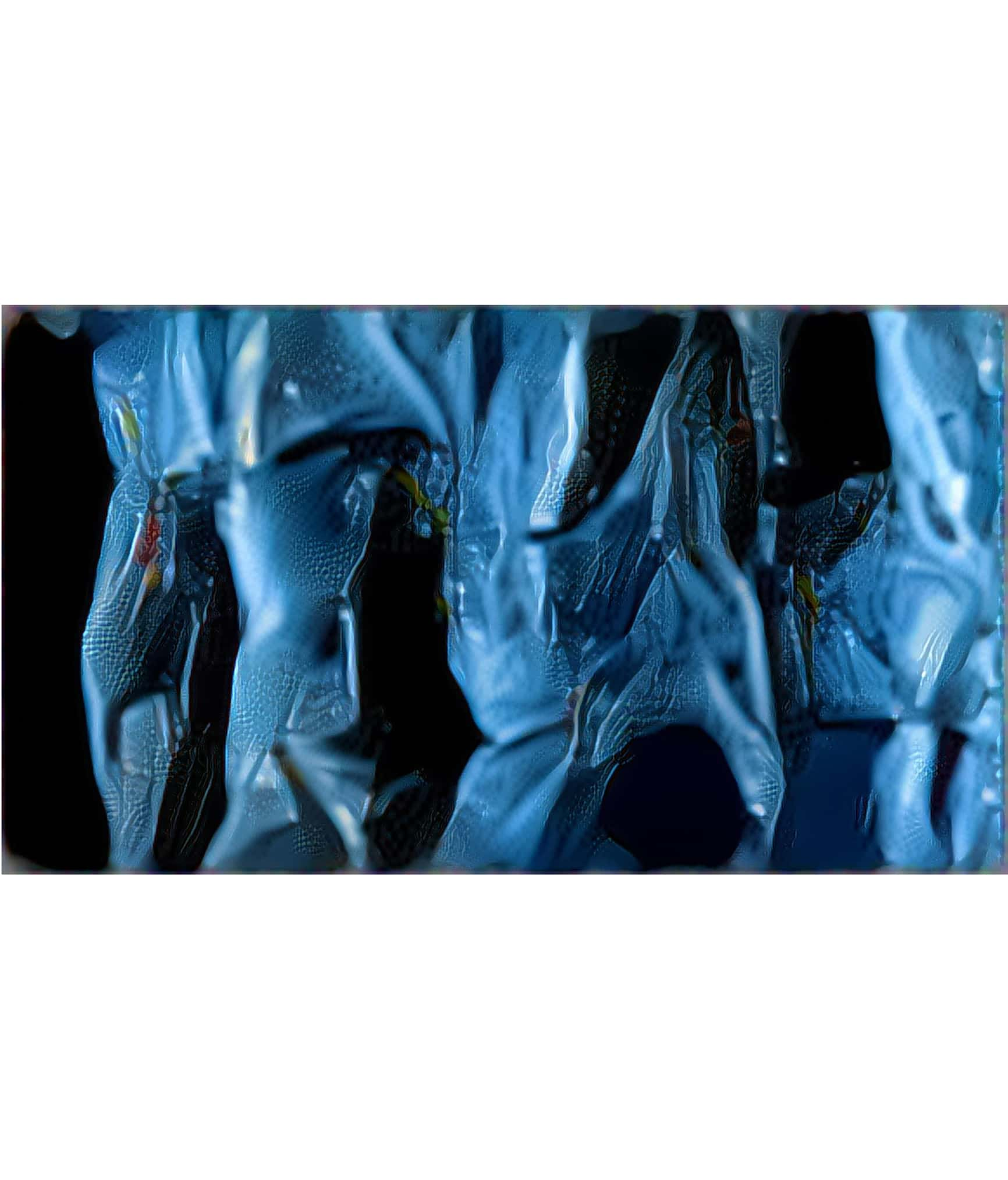
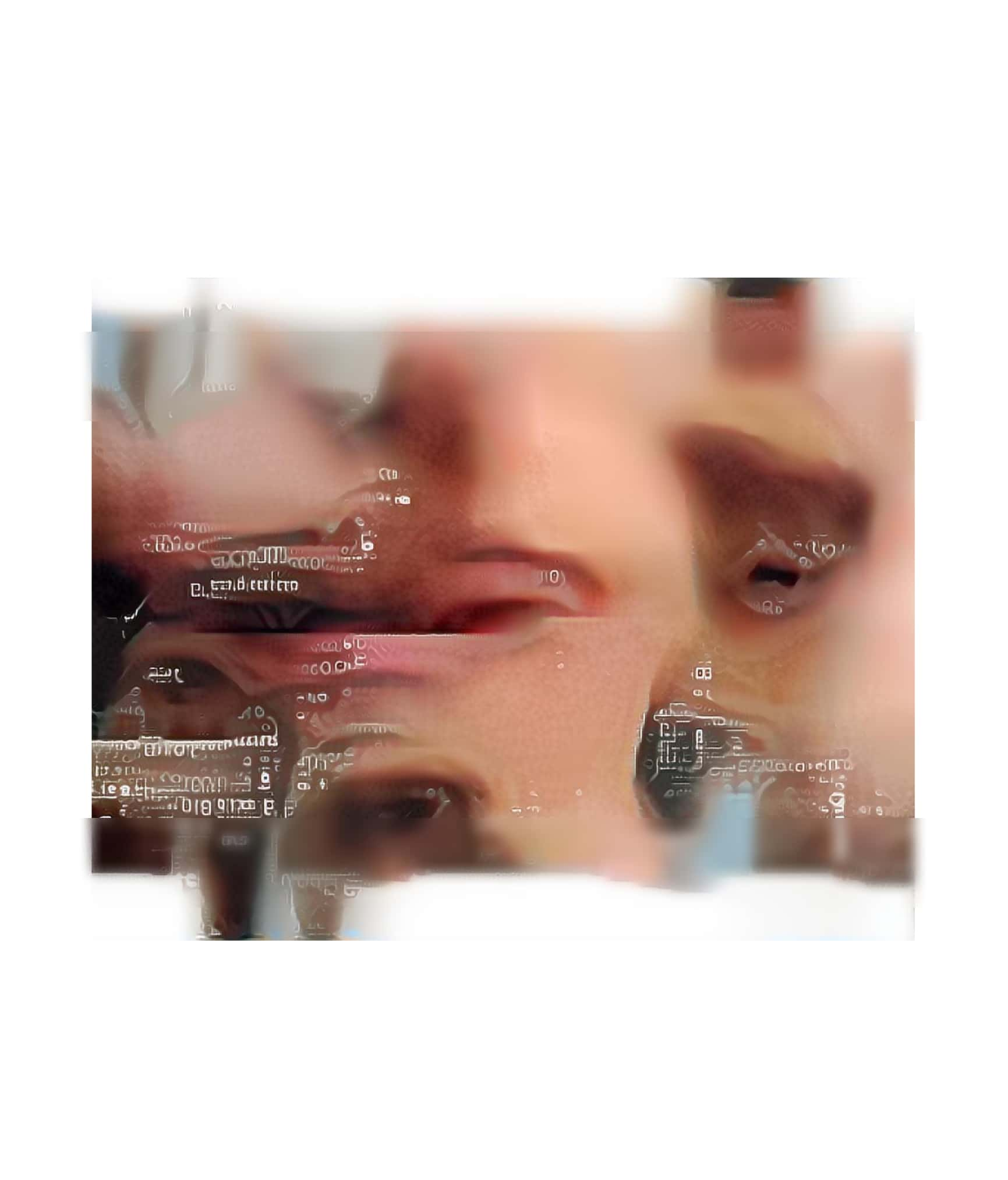

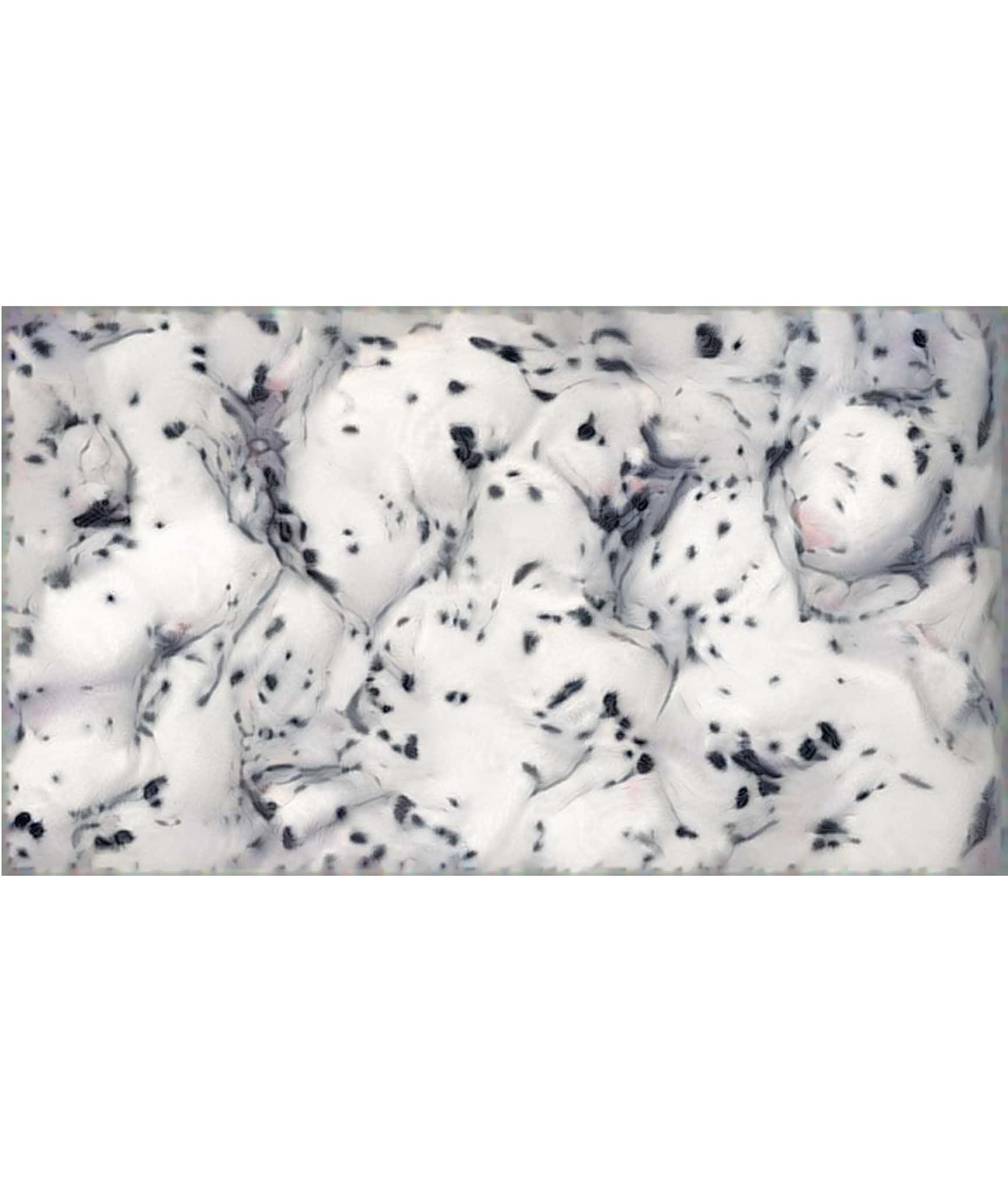
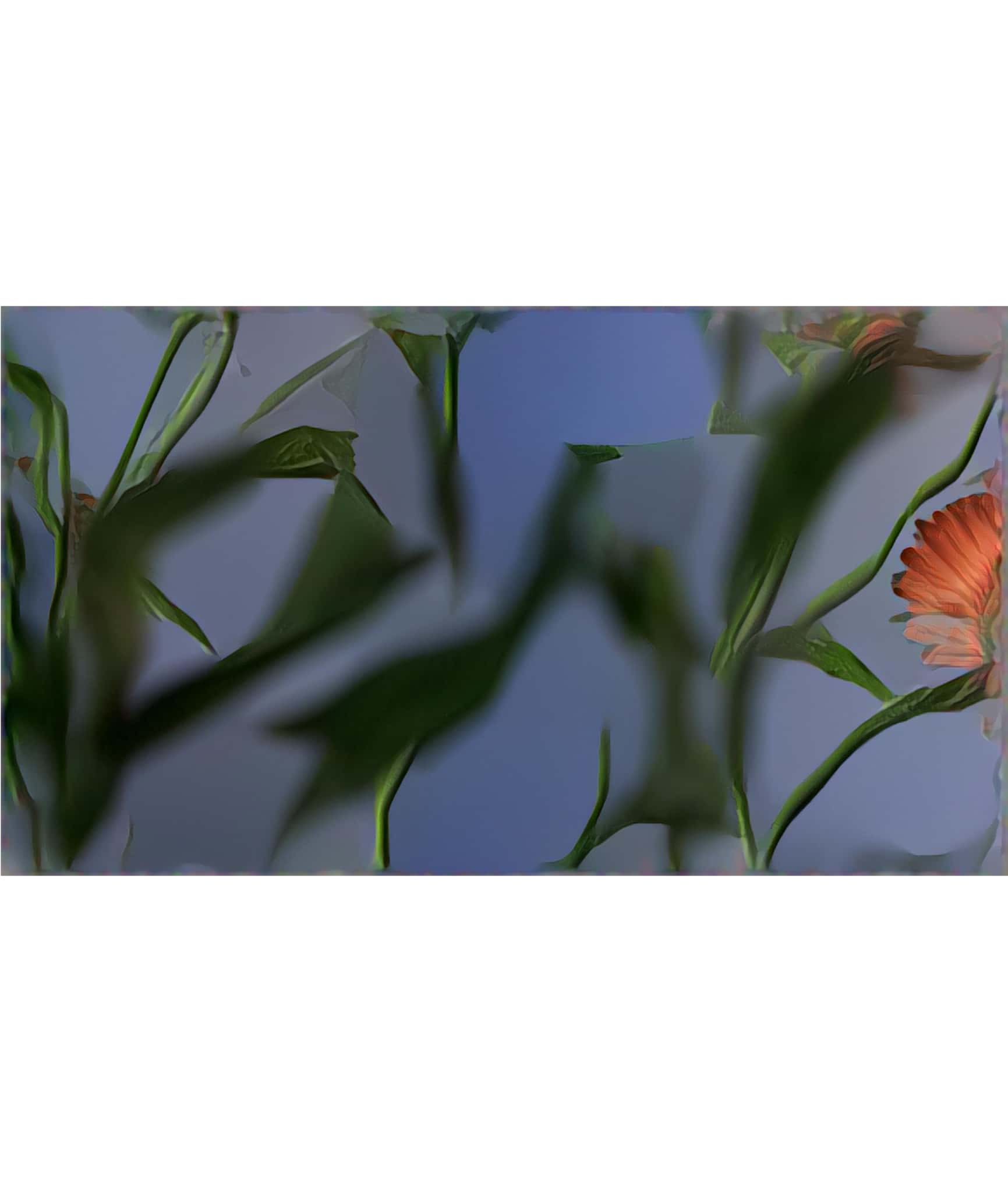


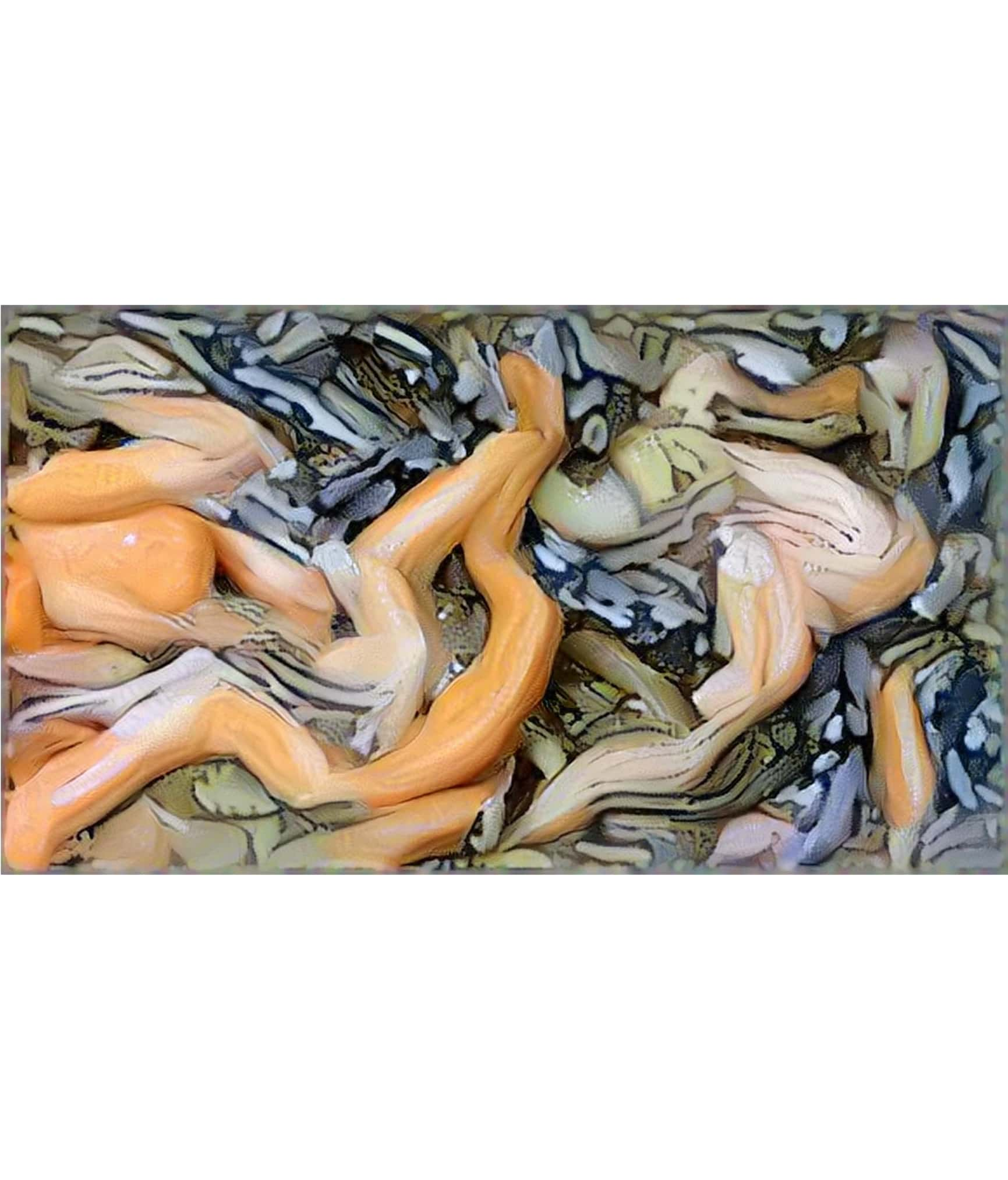

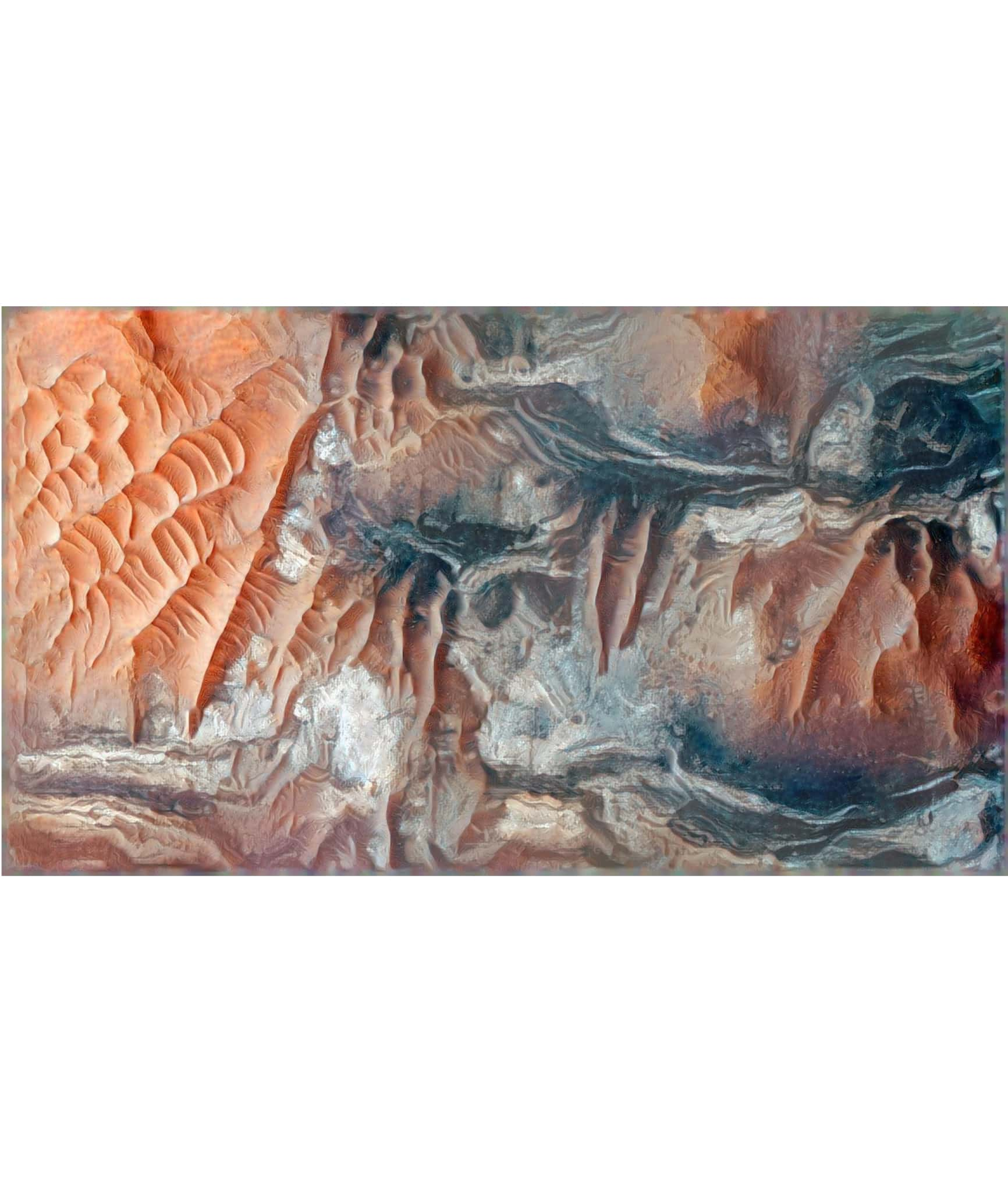

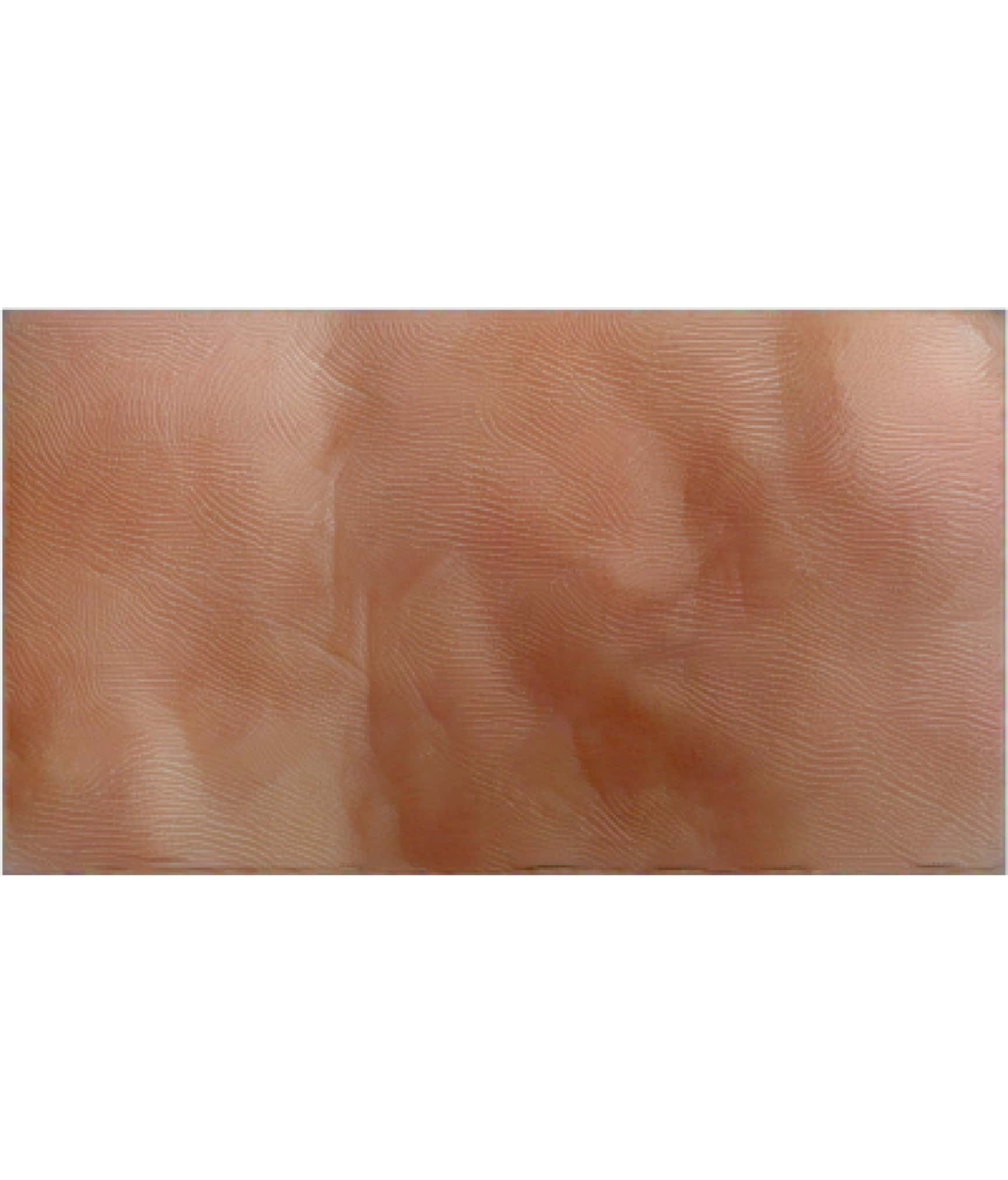
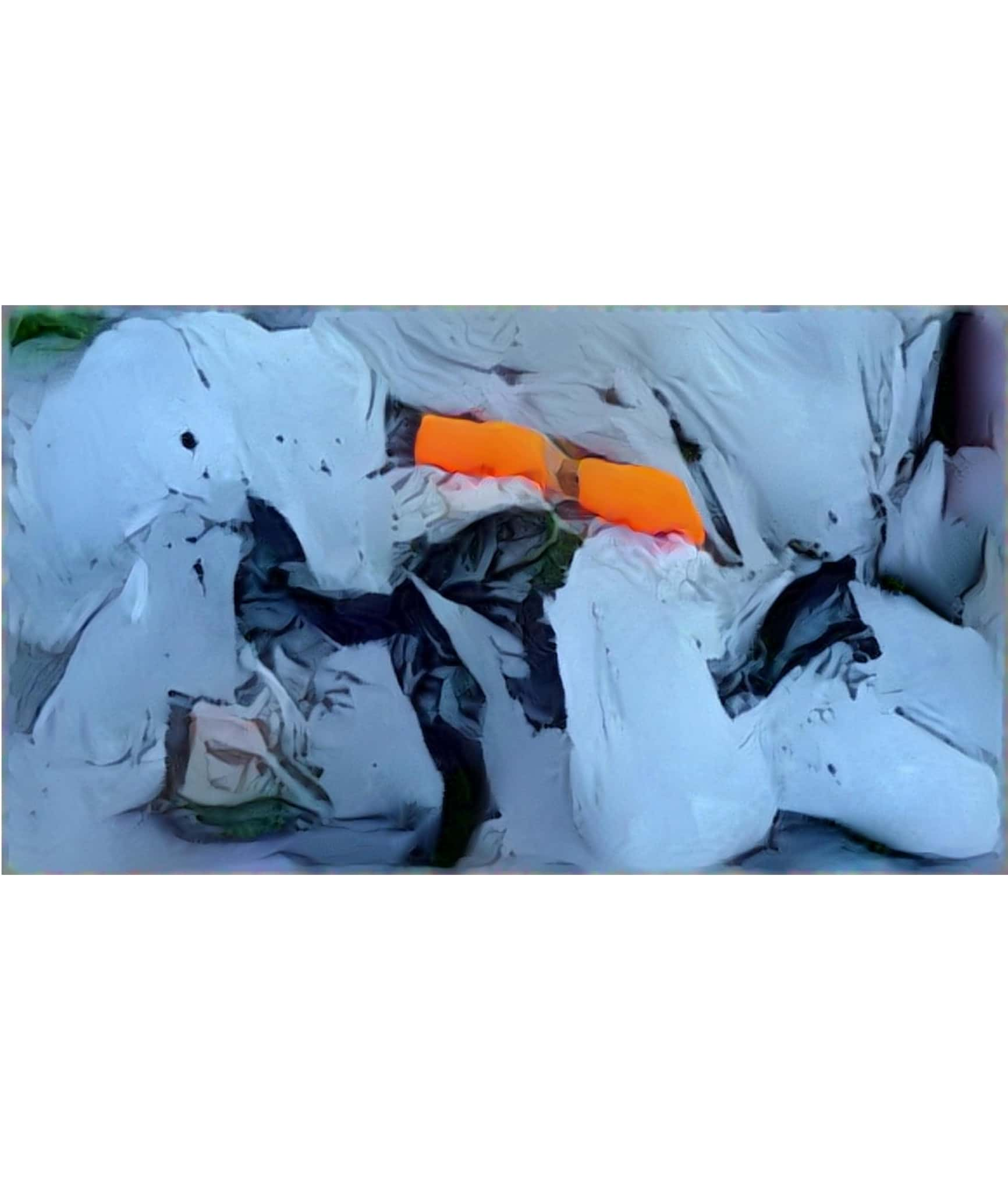
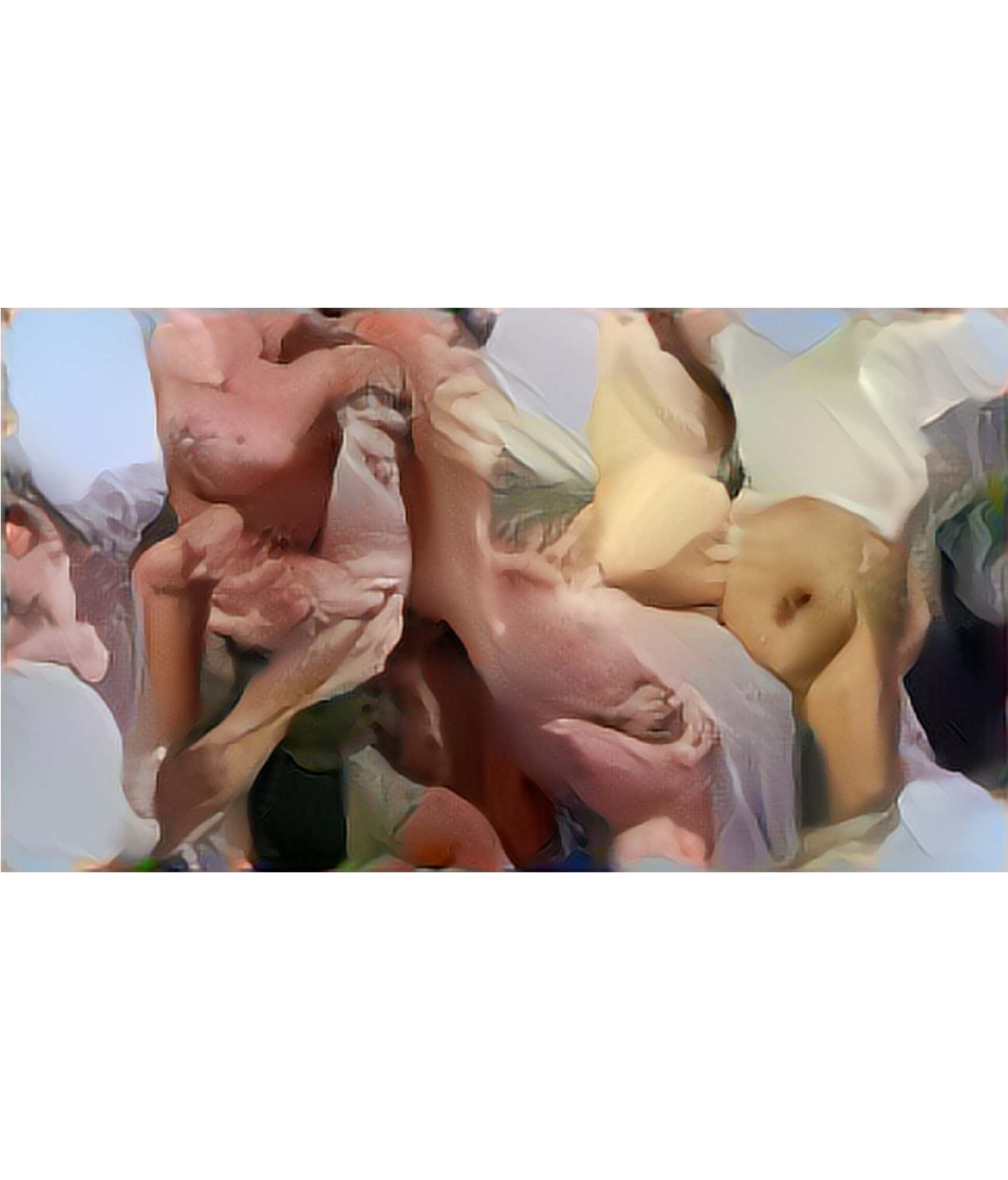

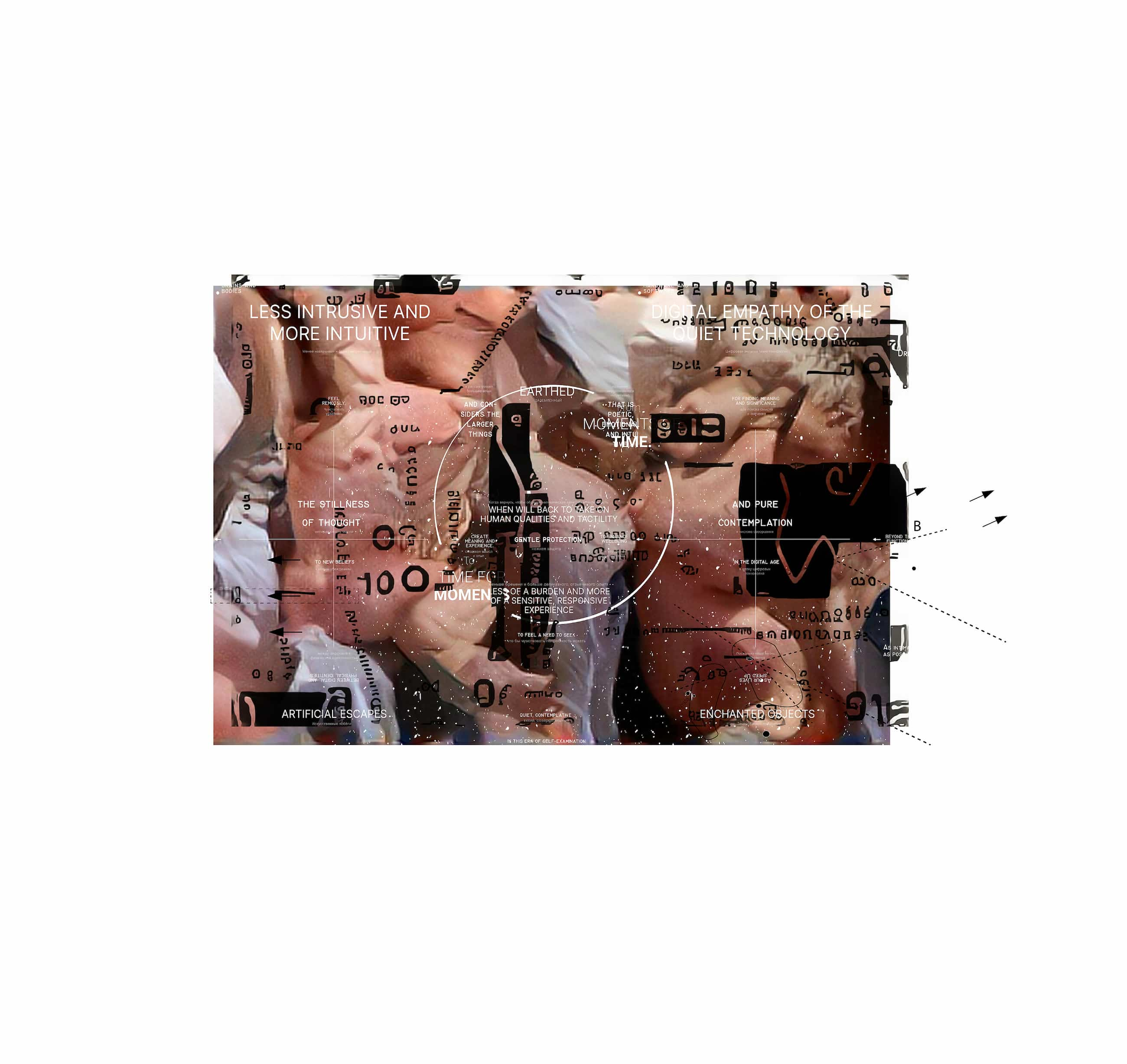
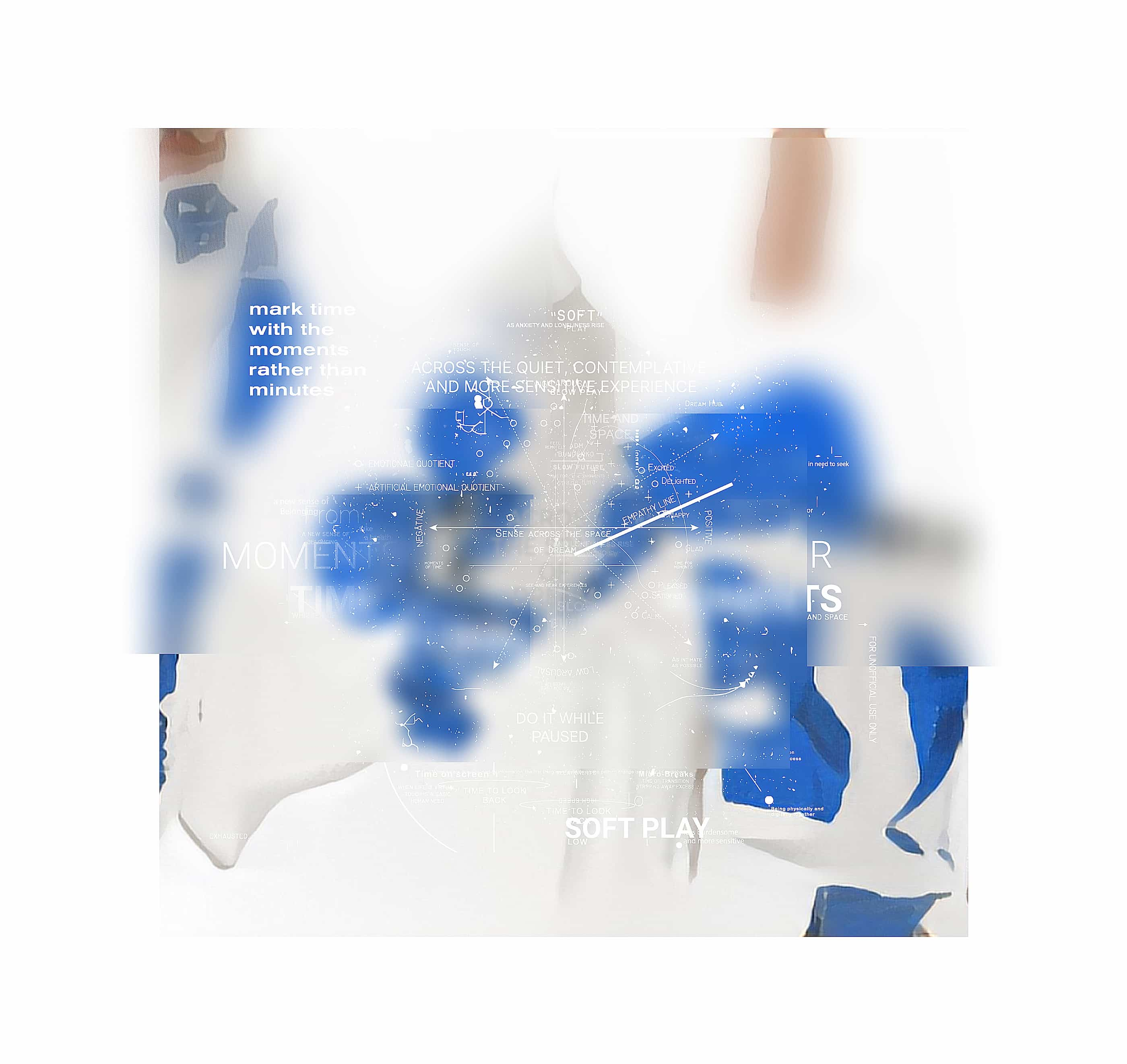
Neural algorithm Output layers. Anton Bundenko, 2020. New Nature series. Data, neural algorithms, digital (sketch / material for artwork).
.
.
Fixed Layers.
“fixed in resin”
Frozen in resin the bits of the Algorithmic times are like inclusions of organic debris or mosquito in Amber. Physical material preserving the digital artifacts as fossils displaying the evidence of
informational heritage and extinct eras.
“In platform capitalism whatever remained of the commons has been ultimately privatized while the affective labor of crowds is constantly exploited... This is a new kind of extractivism developed in the digital economy of surveillance capitalism and based on value extraction from the collective intelligence of the entire society.” (”Systemic Errors of Collective Intelligence. A Conversation with Agnieszka Kurant” Flash-art - by Noam Segal, 3 November 2021)
.
.
7. Fixation. Fixing Material of Thousands of Years.
Resin as a material, being a natural binder, captures/freezes reality and the sediments of processes in it as casts of extinct species and evidence of geological catastrophes.
Resin as a material, being a natural binder, captures/freezes reality and the sediments of processes in it as casts of extinct species and evidence of geological catastrophes.
Resin as a material, as a natural binder, captures a part of uncovered data and "dust" in the air, processes and schemes that permeate us, fixing them in time and space.
This is how the reality is preserved in fragments: settling down, disintegrated and poured into a material that will live for thousands of years with a fundamental materiality attached.
In these works, time removes its metaphysical definition as a chronological line, frozen in the dissolution of splitting and in the memory of the abandoned, stopped and unstoppable
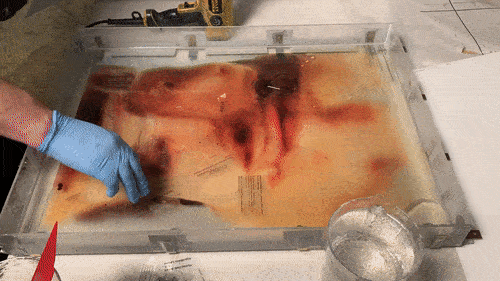


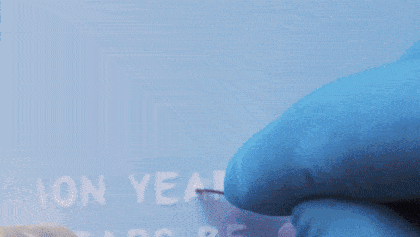
We live in the Age of Systems: complex algorithms, networks, data profiles, data corellations and interconnections absorb everything... Organic and artificial, natural and cultural, physical and digital. I capture their anatomy in the fossil and data to make a snapshot of this time to be preserved as 1000 year artefact.
.
.
Layer 3: Phygital.
“AR as space.”
The artwork is a unique key that opens up in augmented reality. Revealing the information hidden in the layers of resin, AR allows the architecture to unfold and let you explore its anatomy.
.
.
8. Physical and Digital.
Data poured in and frozen physically and haptically in the resin body revealed in the layers of digital Augmented Reality.
Data poured in and frozen physically and haptically in the resin body revealed in the layers of digital Augmented Reality.
This work is a unique key, a code that reveals information hidden in the space of augmented digital reality. Revealing the context, the space of data, and processes around it.
How the artificial and digital inhabits the space, when the distinctions between Real and Virtual, Natural and Technogenic, Physical and Digital are blurred.
How the artificial and digital inhabits the space, when the distinctions between Real and Virtual, Natural and Technogenic, Physical and Digital are blurred.
Text and readings are not linear. The connections extend through time and space. Different layers not previously or separately perceived reveal a new significance and power, coming together in the context of all the networks and connections.
Here it is no longer possible to recognize the beginning and the end, or whether there is one. It rather disorients the trajectory of exploration and understanding, but immerses us in a sense of a more authentic reality, more actual and valid.
.
.

Human. Social graph. Anton Bundenko, 2021. New Nature series. Epoxy resin, data, air, aluminum composite, plastisol, aqueous dyes, paper, neural algorithms,
Augmented reality digital layers, 66x118x1.3-2cm. View of the work during the disclosure of the digital layers in augmented reality.
.
.
9. Artist's Tools.
How systems see, plants live and entities exist. Where initial schemes and symbols become material for creating signs, completed by algorithms or picked up by natural systems.
How systems see, plants live and entities exist. Where initial schemes and symbols become material for creating signs, completed by algorithms or picked up by natural systems.
Rather than focusing on how people see the world in a different way through the prism of emerging technology, it is possible and essential to look and feel in the coordinates of how systems see, focusing on Nature as not only the living and the Natural, the Human, but also the Non-living when it gains autonomy.
Then the experience of other beings and entities, including a chair, a blade of grass, a mushroom and a bird, a snowstorm and capitalism, will not remain beyond understanding necessary for reality. It may be difficult to perceive, but possible to feel.
And the AI tools, machine vision and network algorithms become suitable tools in the artist's work.

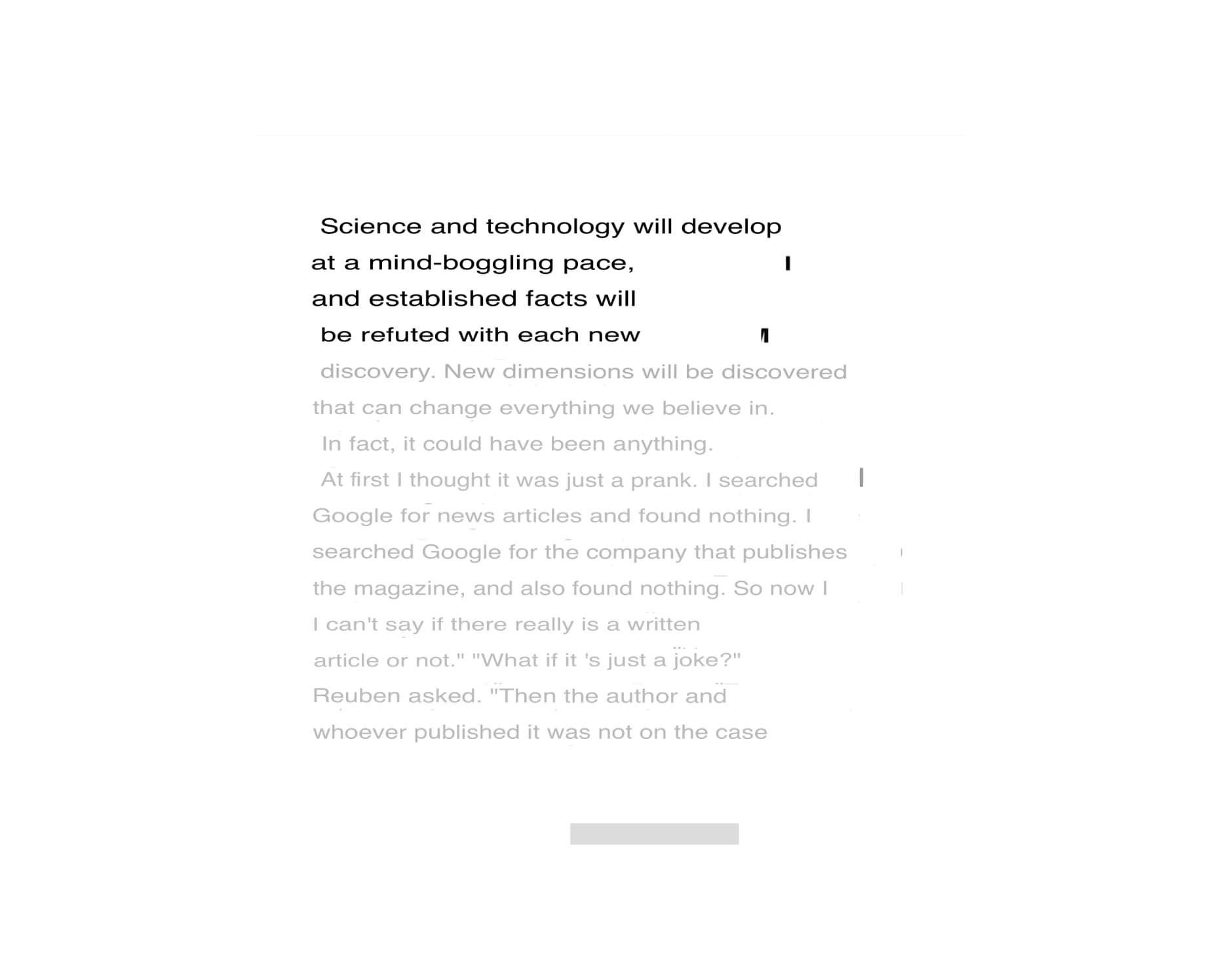

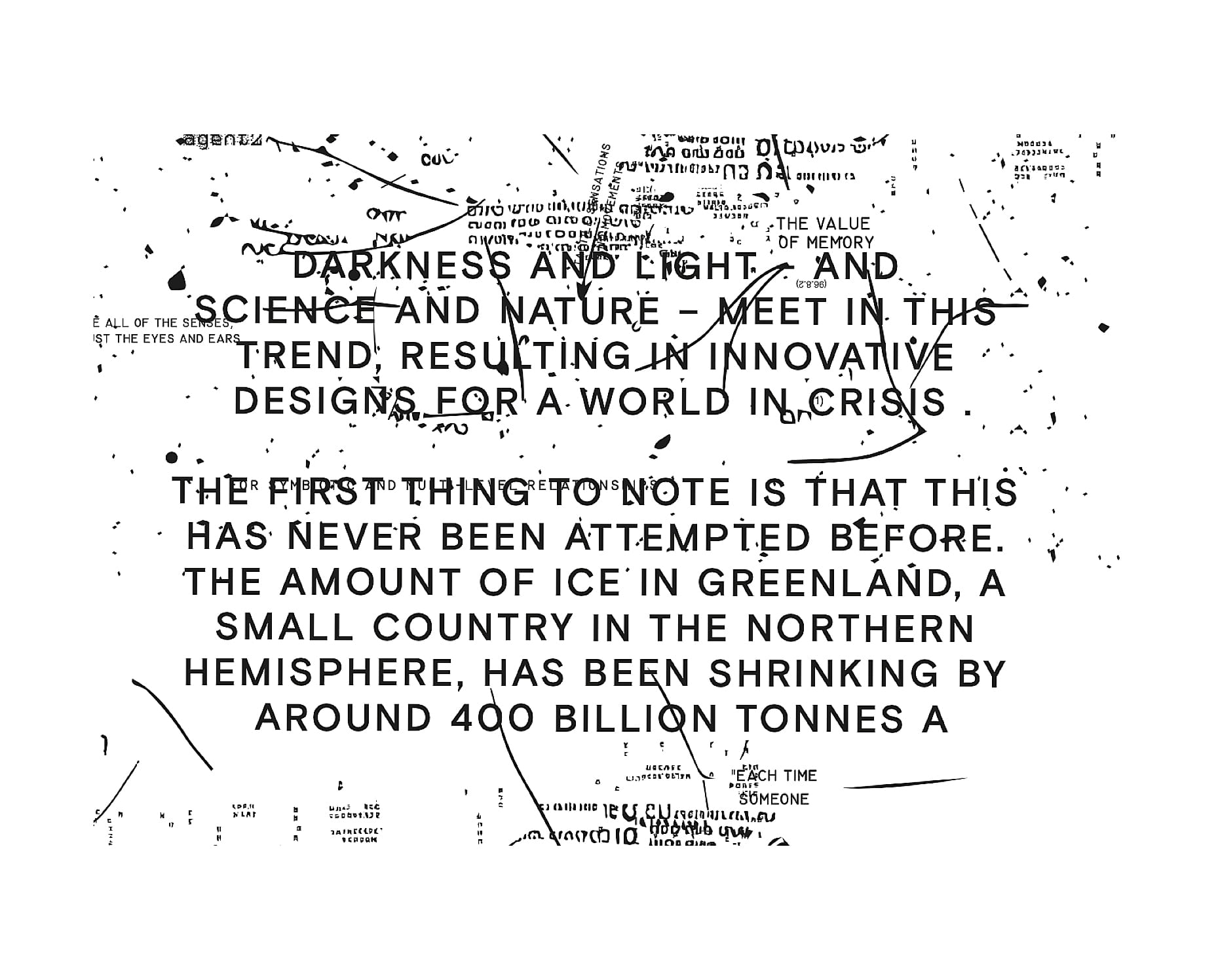


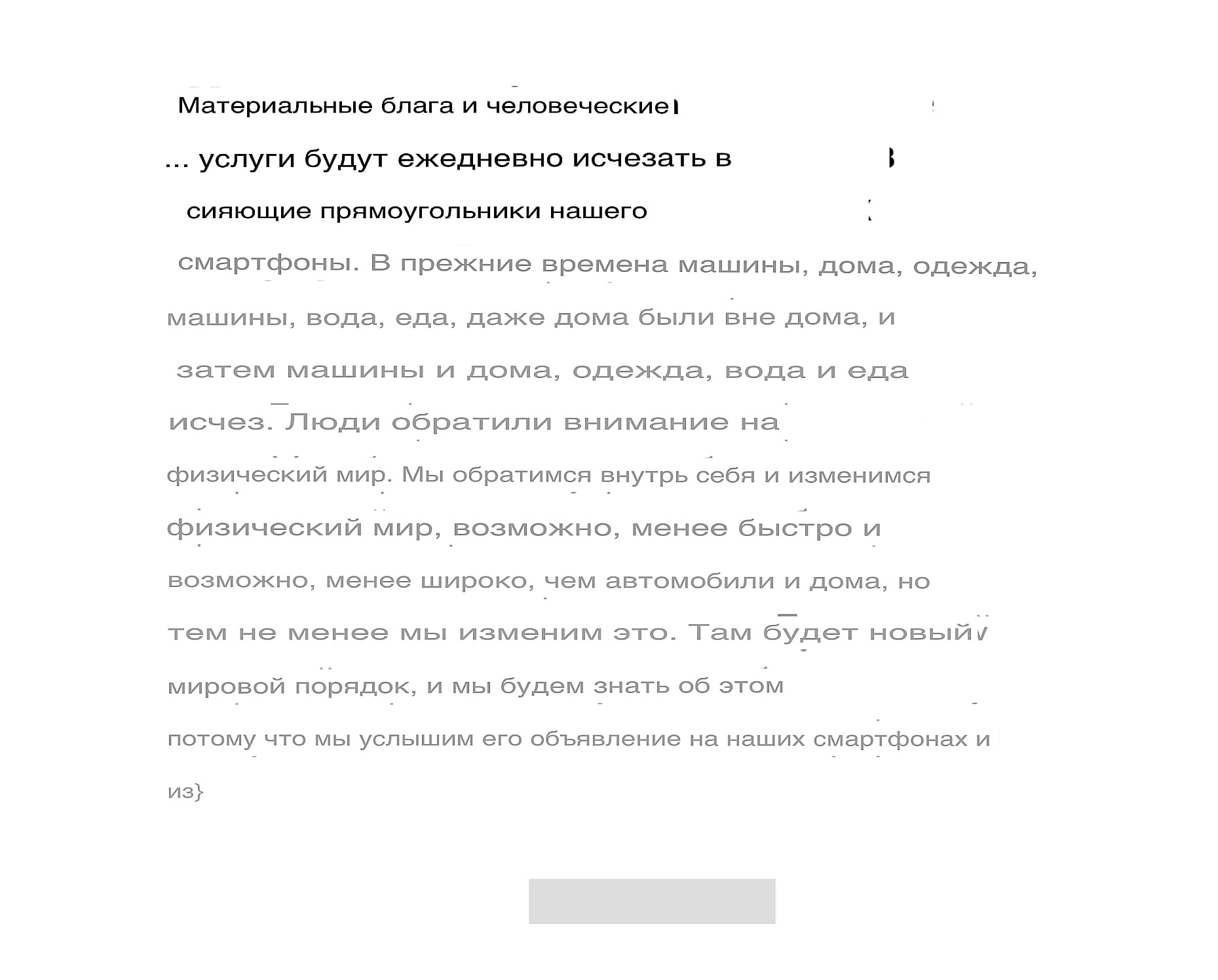

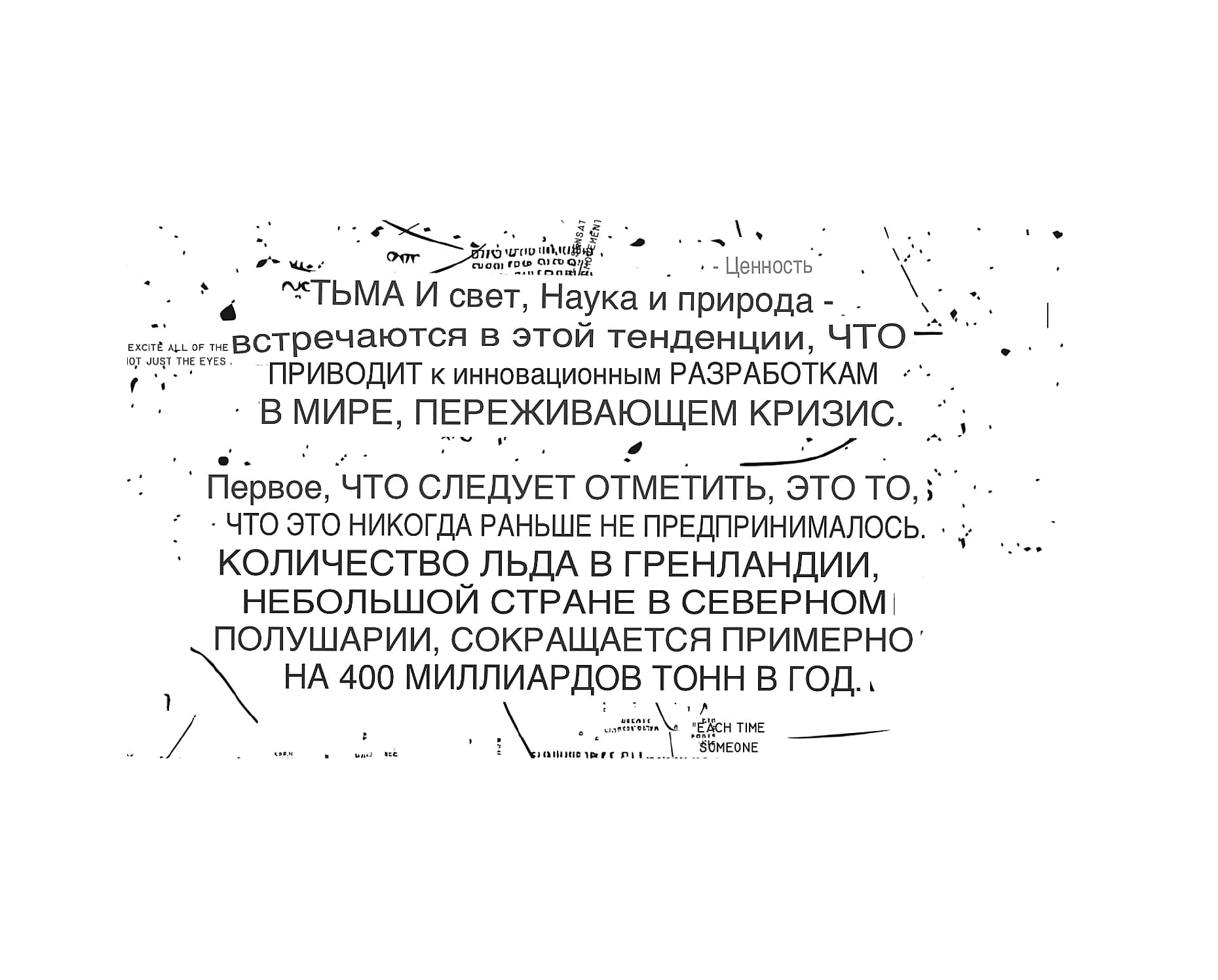
Texts and phrases continued by neural network algorithms. Anton Bundenko, 2021. New Nature series. Data, neural algorithms, digital (material for artwork).
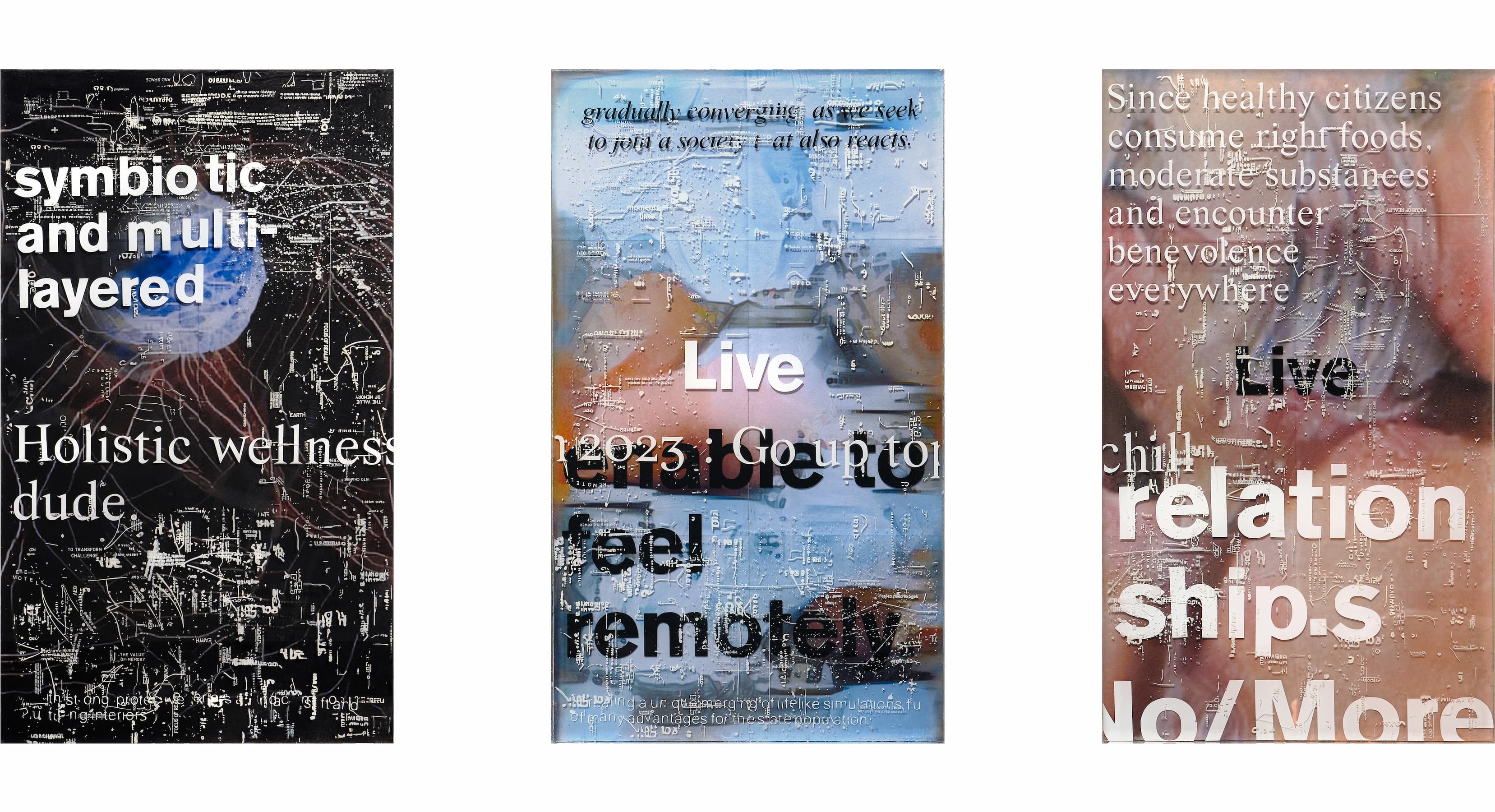
Triptych - advertising from the world of Electrosmog: “Symbiotic and multillayred Holistic Wellness dude”, “Live: to feel remotely”, “Live: chill No More relationship.s”. Anton Bundenko, 2021.
New Nature series. Epoxy resin, data, air, aluminum composite, plastisol, aqueous dyes, paper, neural algorithms, augmented reality digital layers, non-fungible token ID, 80x35x1,2-1,5cm.
.
.
10. Messages.
Schemes become messages, as if they were another language not yet known or already forgotten. Messages about the Present to the Future. Or vice versa, warnings from the Future to the Present, recycled systems of the natural Past in the interpretation of the technogenic systems of the Future and the Present.
Schemes become messages, as if they were another language not yet known or already forgotten. Messages about the Present to the Future. Or vice versa, warnings from the Future to the Present, recycled systems of the natural Past in the interpretation of the technogenic systems of the Future and the Present.
Schemes turn into messages, as if they were another language not yet known or already forgotten. Working on the same basis as the artifacts found before our era, with the same sense of distance and incomprehensibility, of the unknown and uncertain future as much as of the impossibility
of fully understanding and comprehending the past, which is preserved in stone with thousands of years of sediment from before our era.
Like casts of extinct species and evidence of geological catastrophes, like a broken file, a glitchy connection, an expiration or eco-utilization warranty card, these are messages about our time to the Future. Or the opposite, warnings from the Future to the Present.



Symbols and signs. Anton Bundenko, 2021. Data, neural algorithms, digital (material for artwork).
.
.
Like casts of extinct species and evidence of geological catastrophes, like a broken file, a glitchy connection, an expiration or eco-utilization warranty card, these are messages about our time to the Future. Or the opposite, warnings from the Future to the Present.
.
.
Catalog 01.
...
...
...
...
...
..
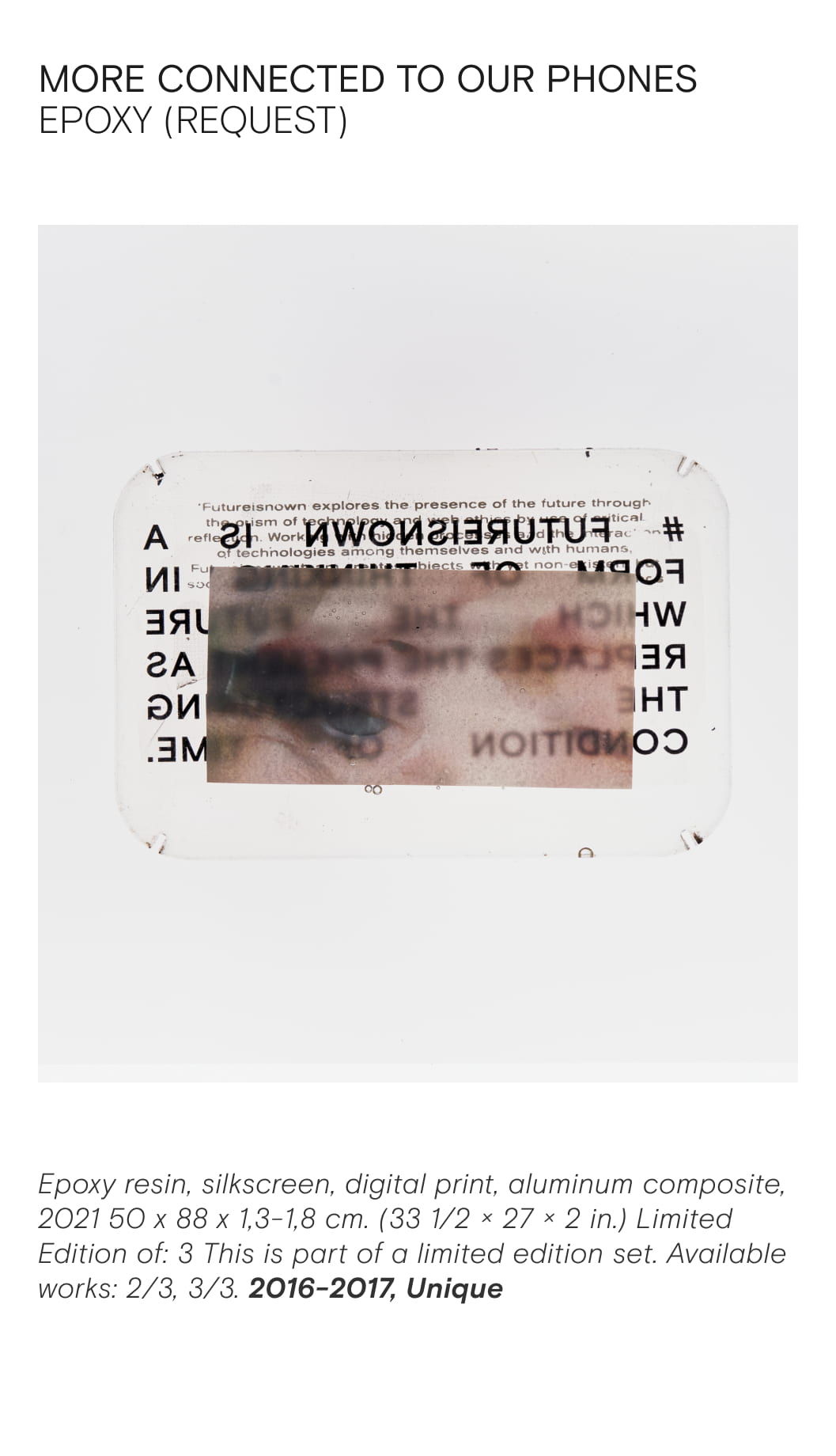
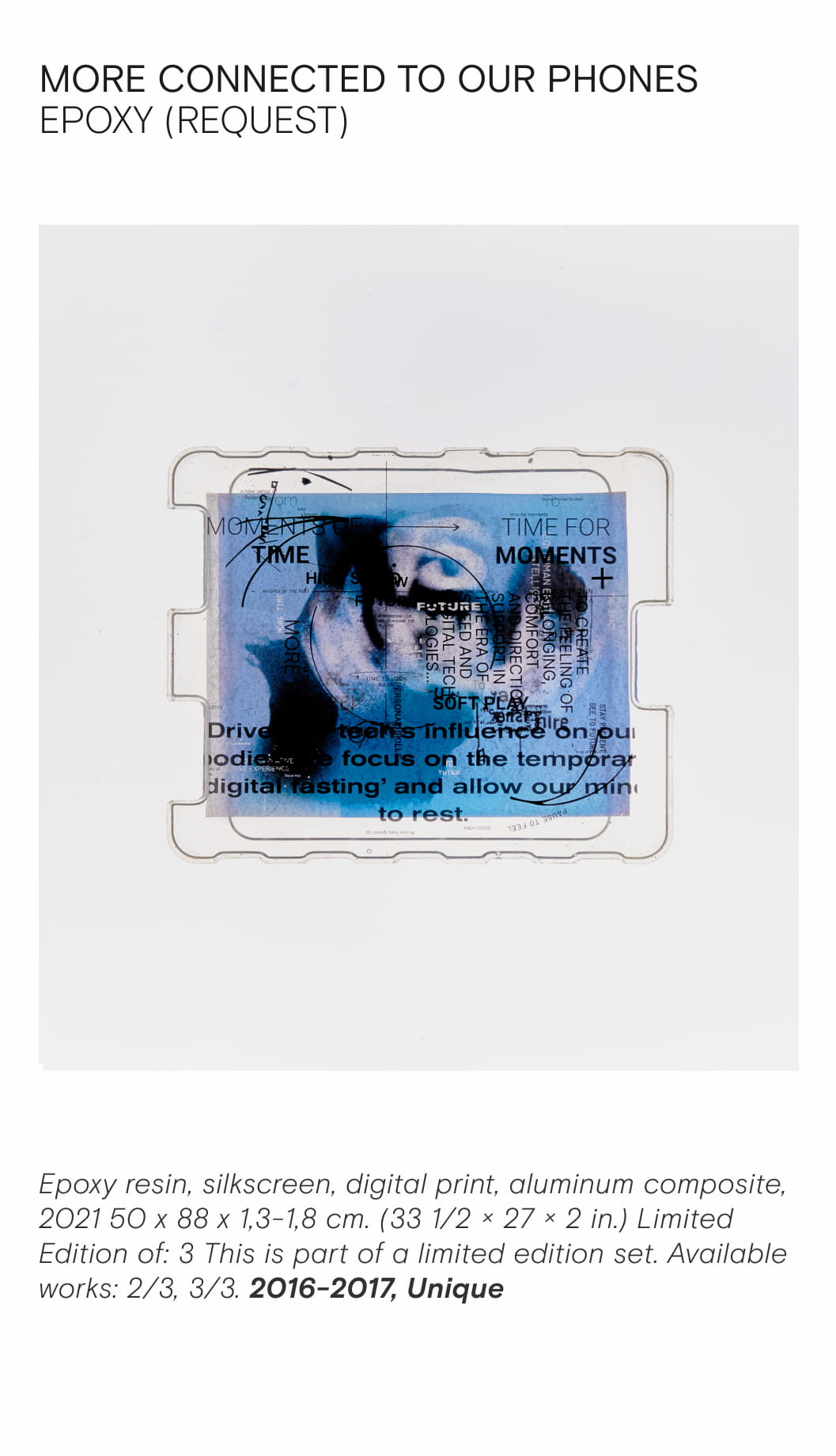

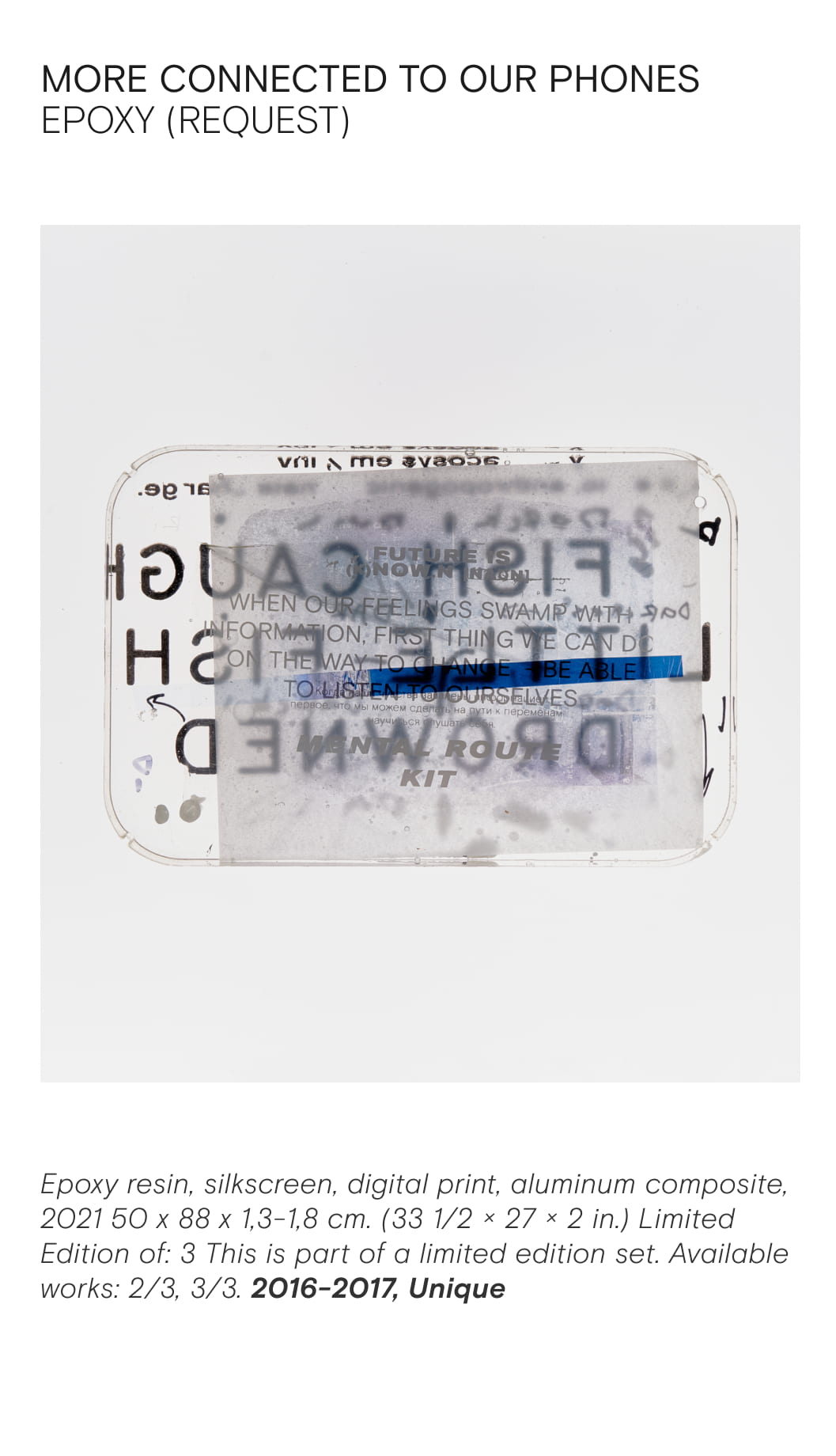
Catalog 02.
...
...
...
...
...
..

Anton Bundenko, 2021. New Nature series. Epoxy resin, data, air, aluminum composite, plastisol, aqueous dyes, paper, neural algorithms, 70x50x1.5-2cm. I
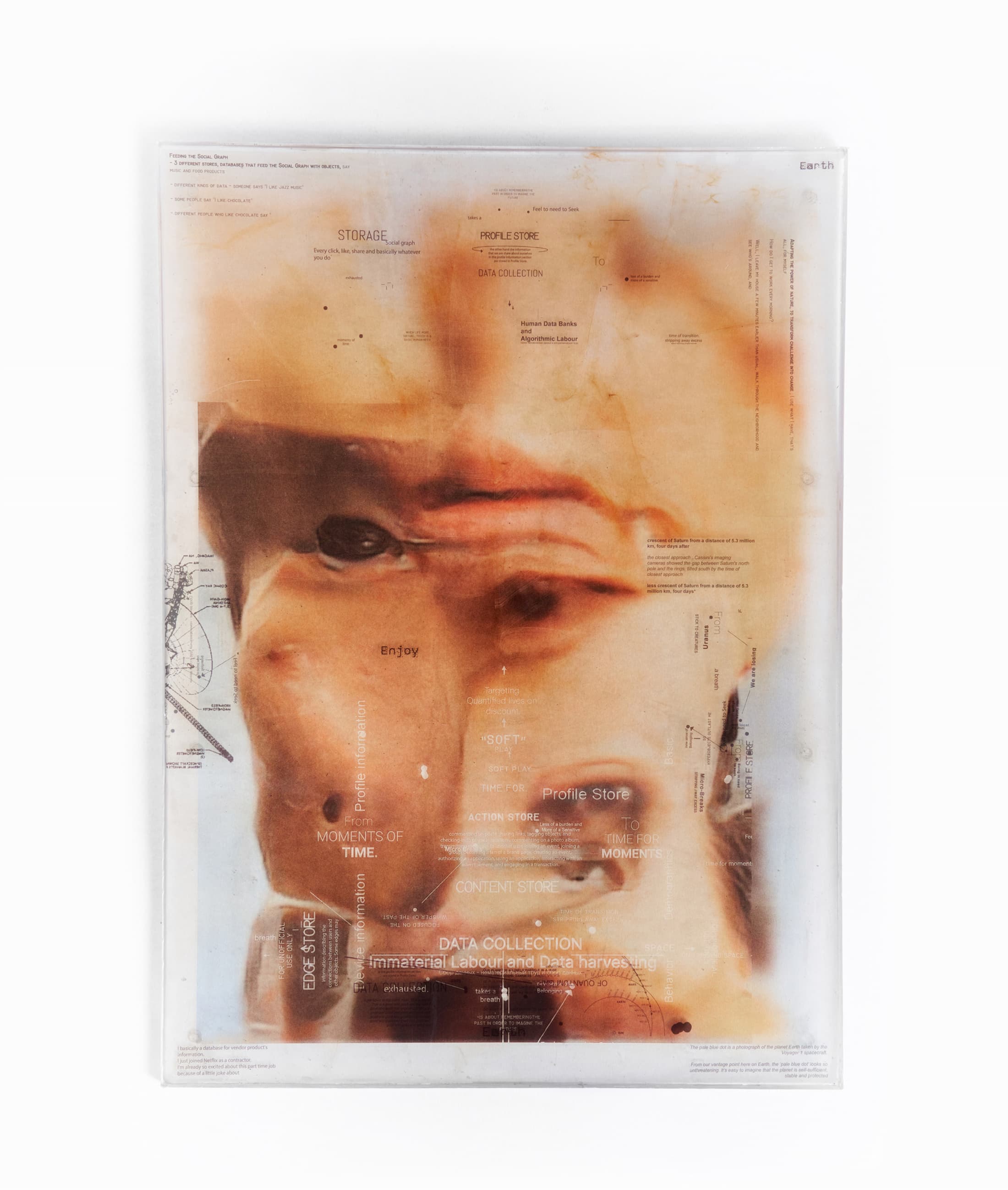
Anton Bundenko, 2021. New Nature series. Epoxy resin, data, air, aluminum composite, plastisol, aqueous dyes, paper, neural algorithms, 70x50x1.5-2cm. II
.
.
.
.
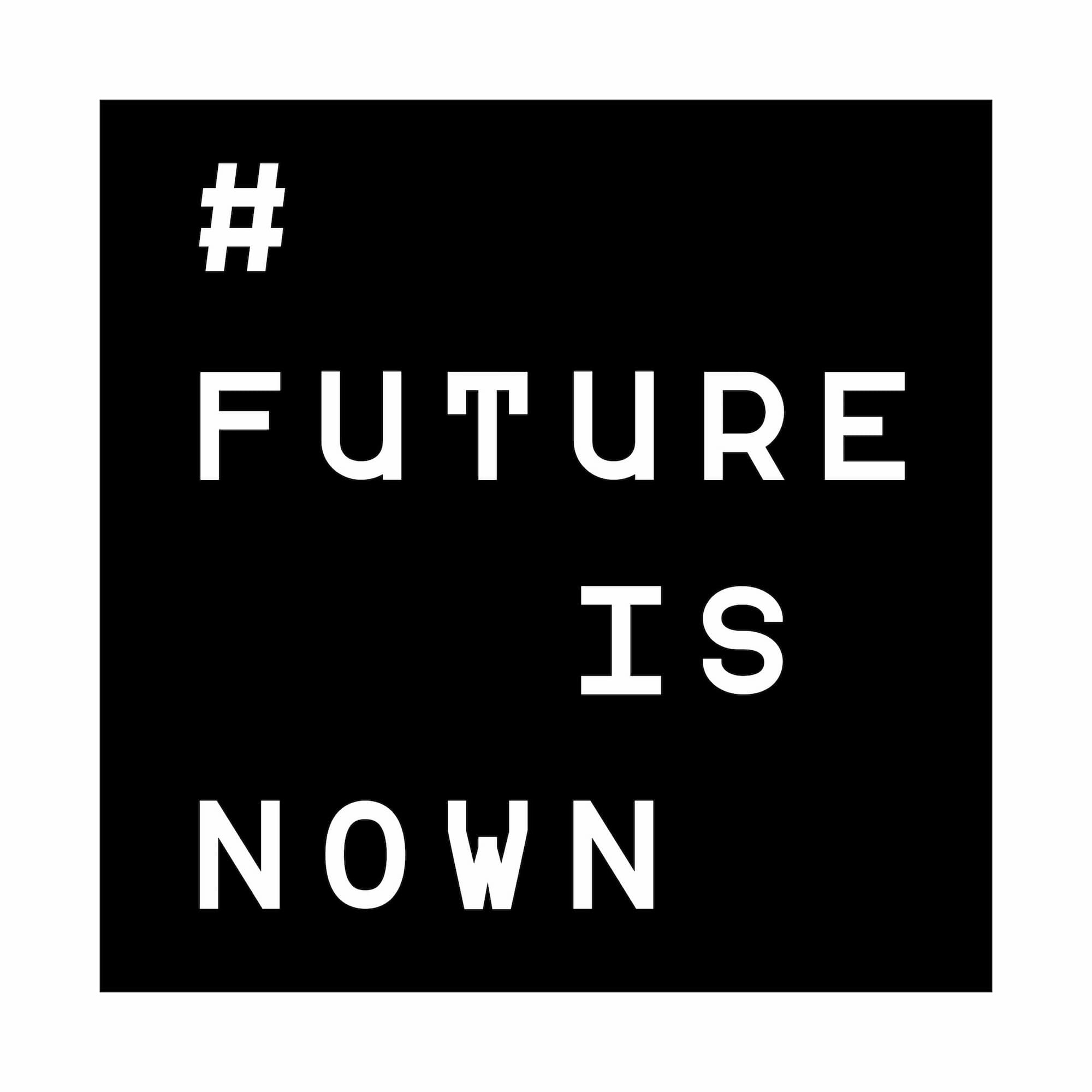
Anton Bundenko
Object design, Merch
Graphic design
Visual production
Tech-Art solutions
Art with ai for interior and exterior
Augmented reality
Neural networks
Object design, Merch
Graphic design
Visual production
Tech-Art solutions
Art with ai for interior and exterior
Augmented reality
Neural networks
Productions:
About
Studio
Production
Distribution
Career
About
Studio
Production
Distribution
Career
Links:
Media
Press
Downloads
Media
Press
Downloads
+79-057-193-600 ( telegram )
+996-507-740-436
bundenko@gmail.com. ︎
︎ ︎ ︎ ︎
![]() Are.na
Are.na
+996-507-740-436
bundenko@gmail.com. ︎
︎ ︎ ︎ ︎
